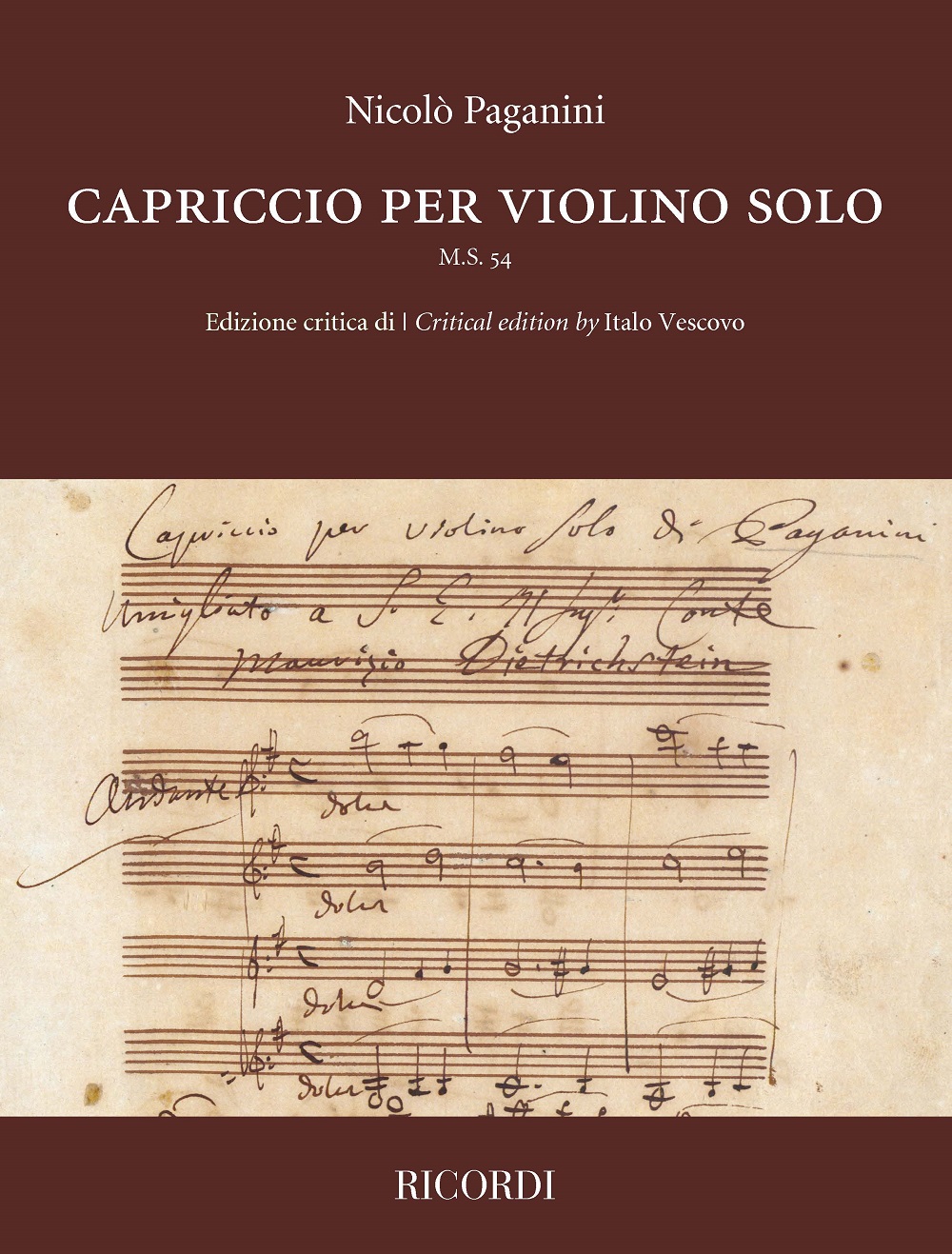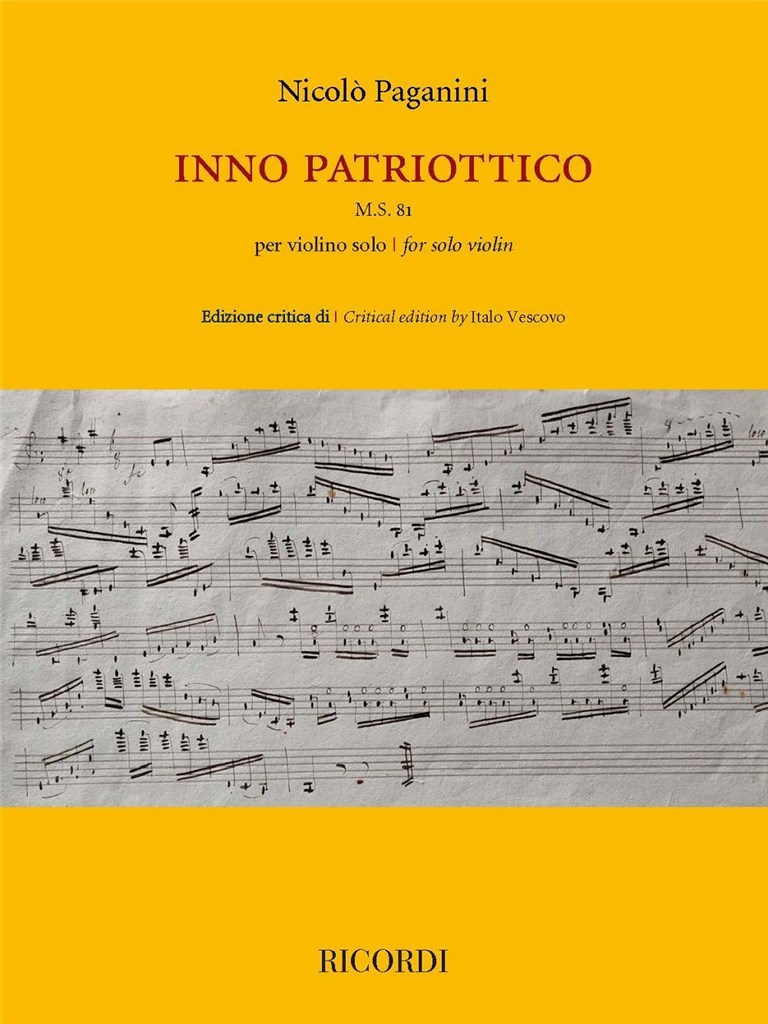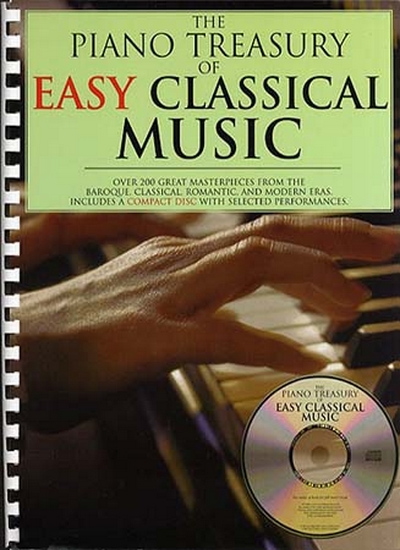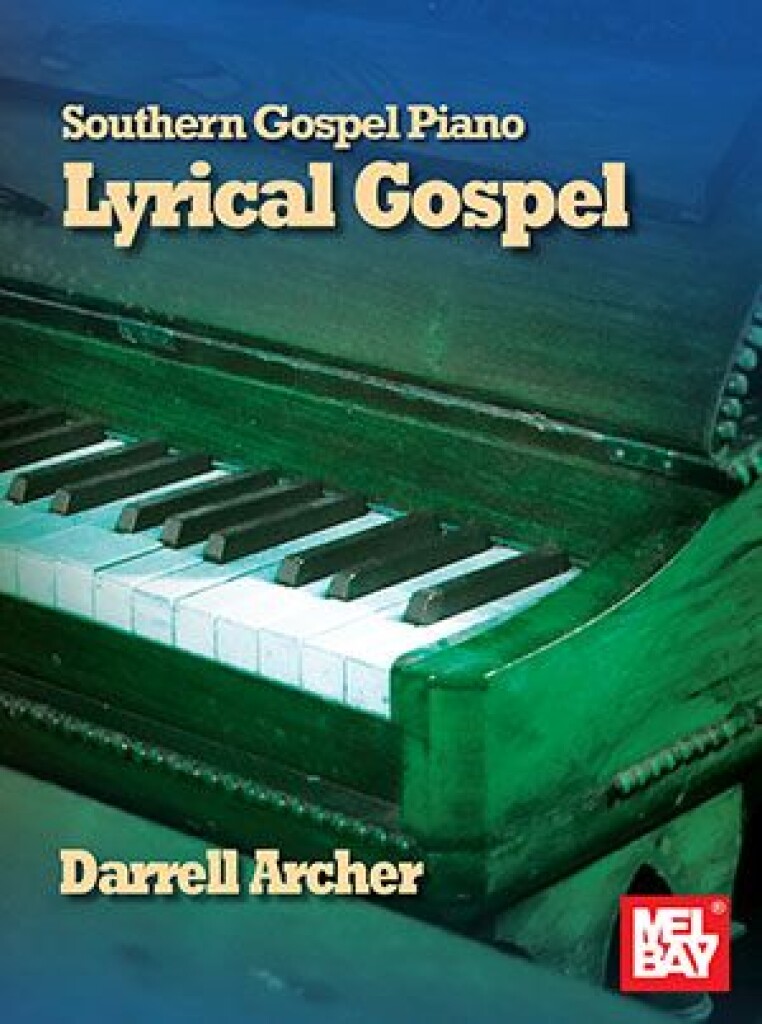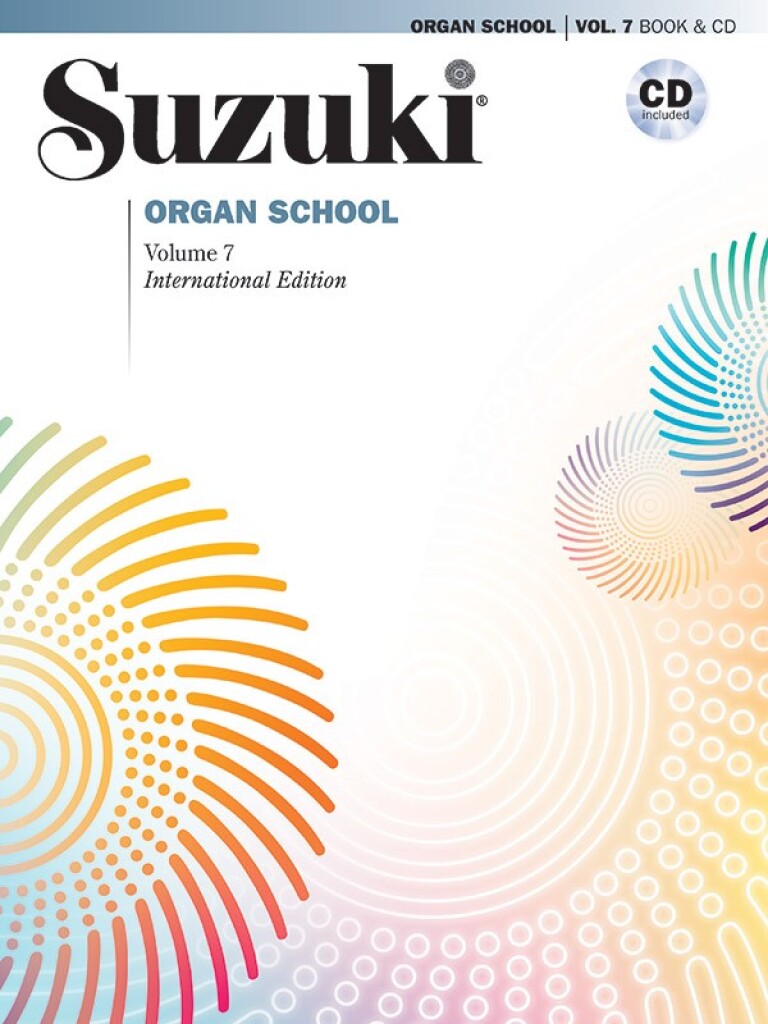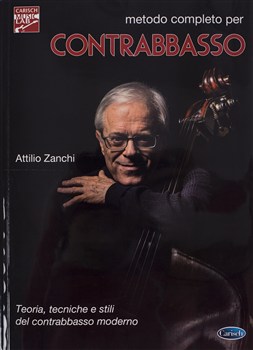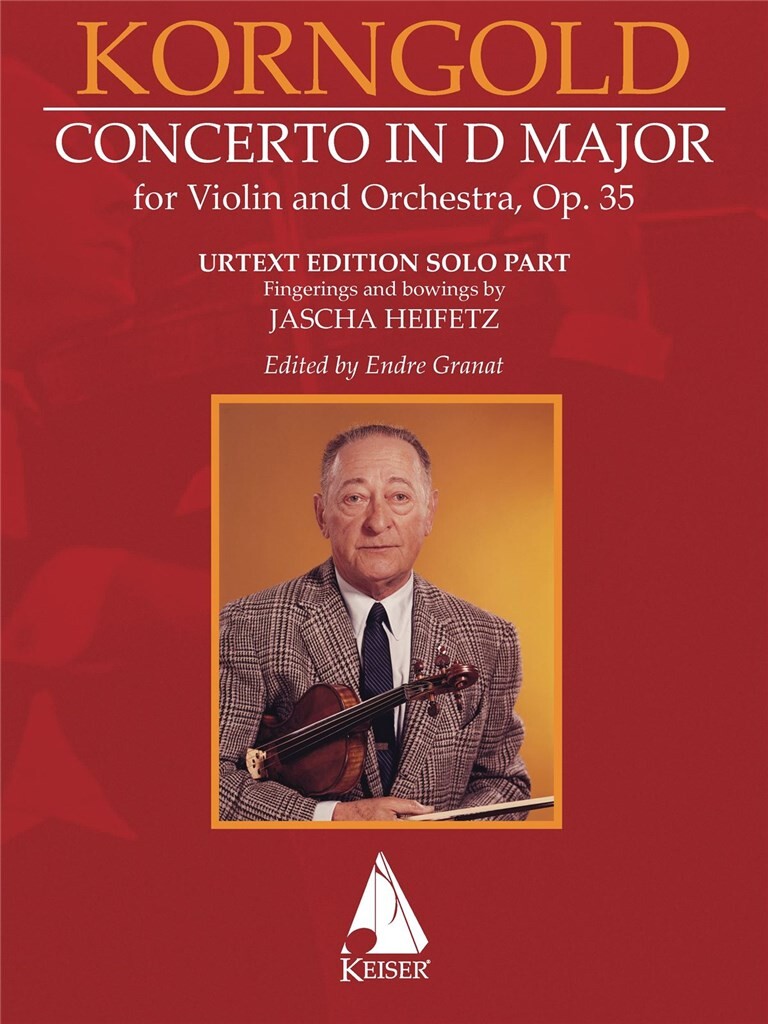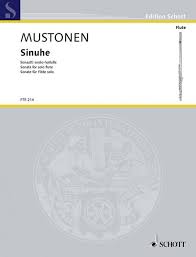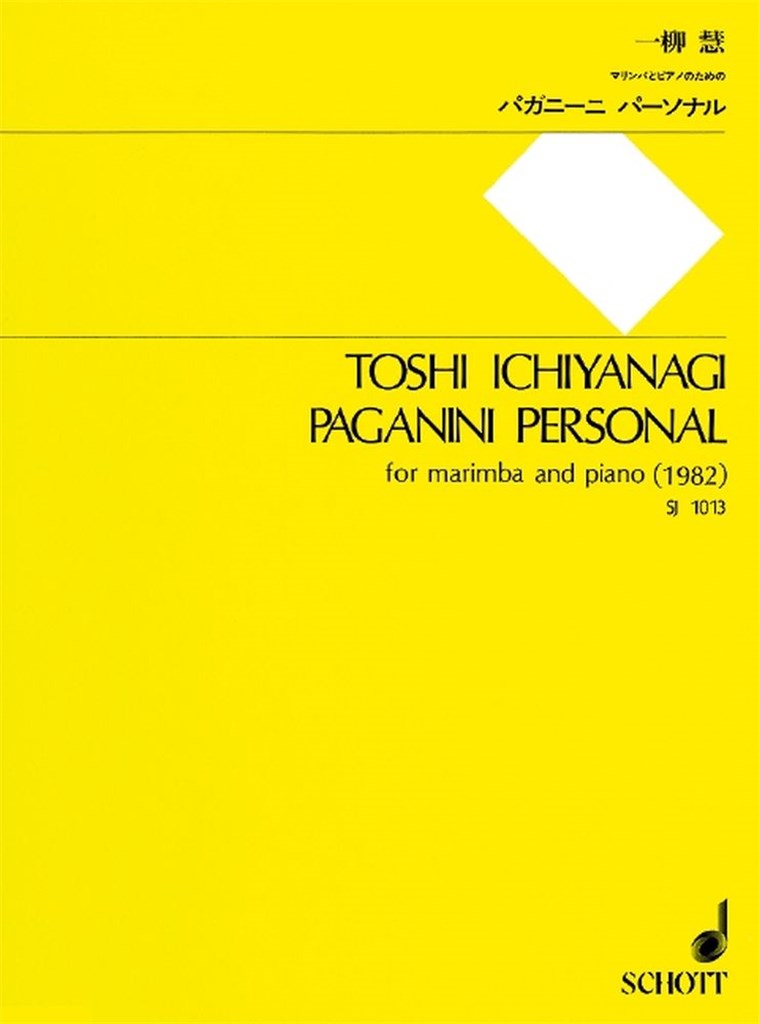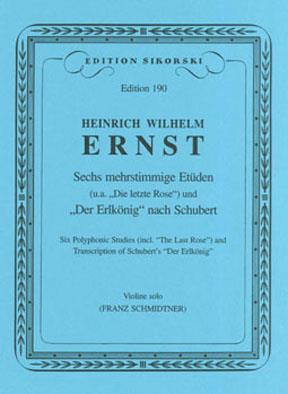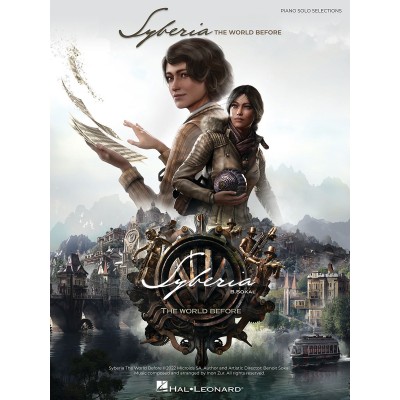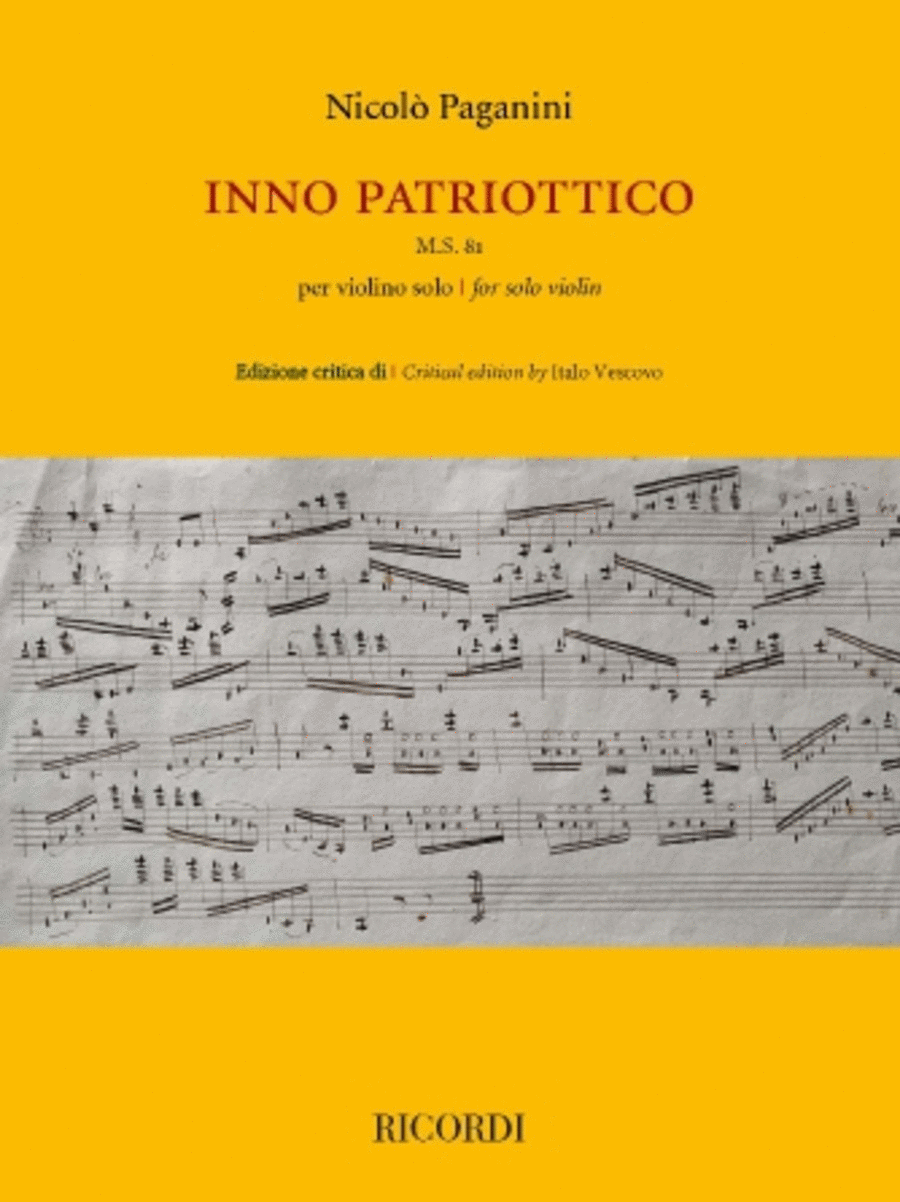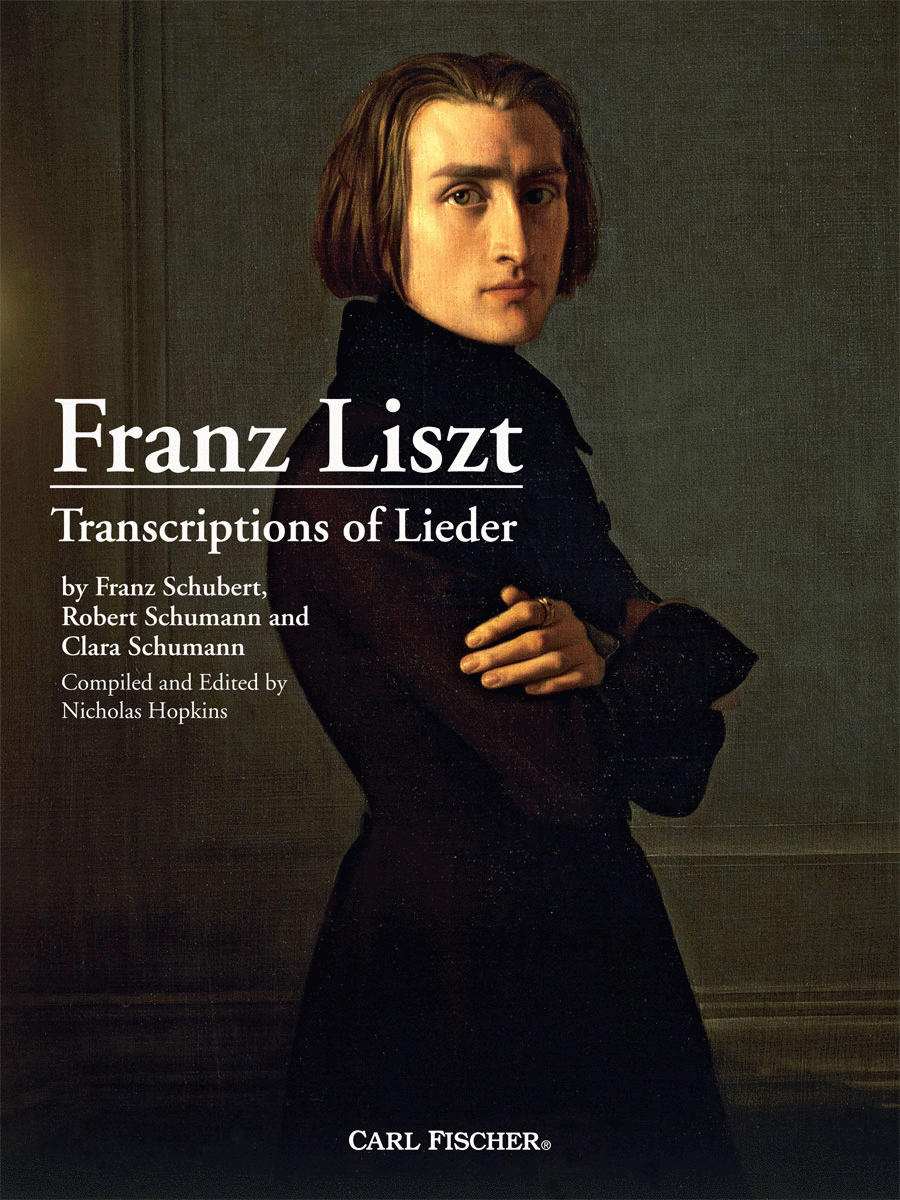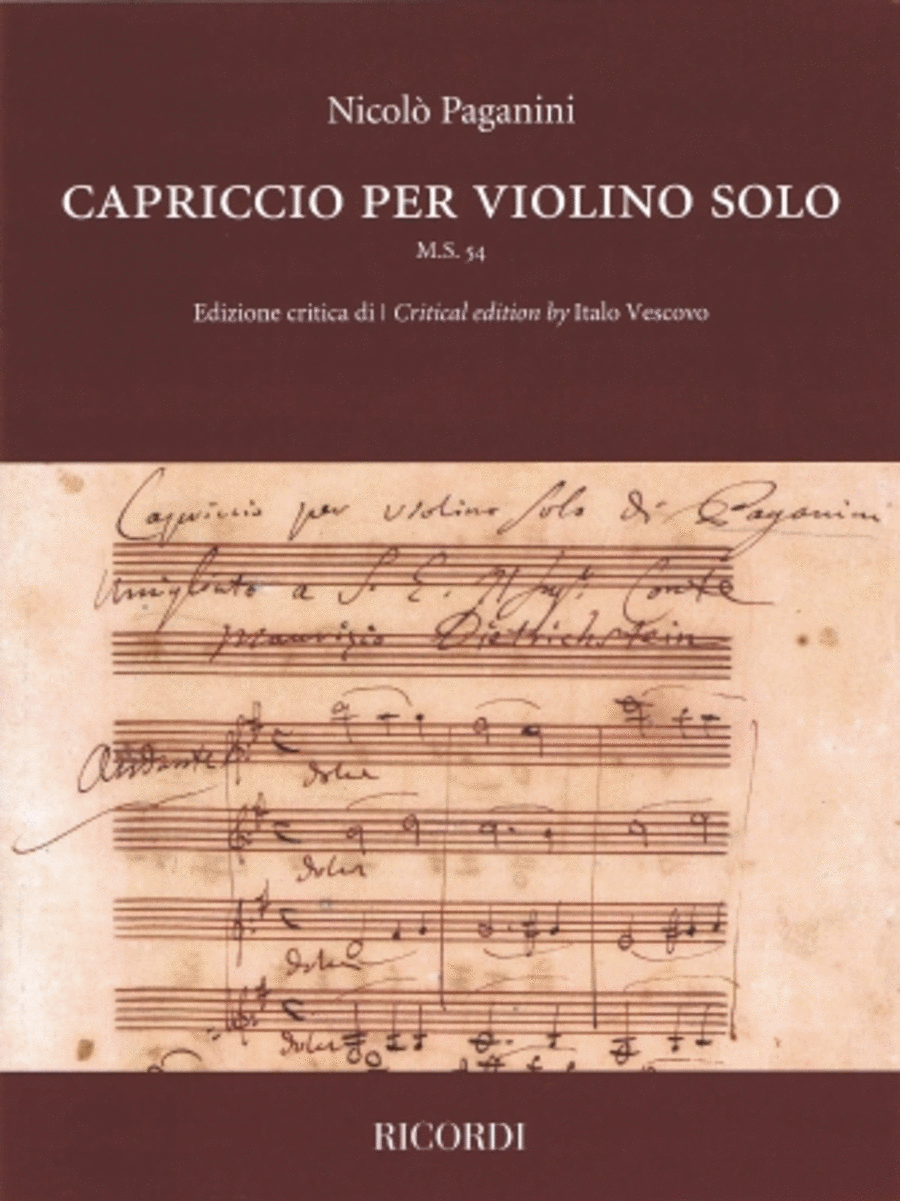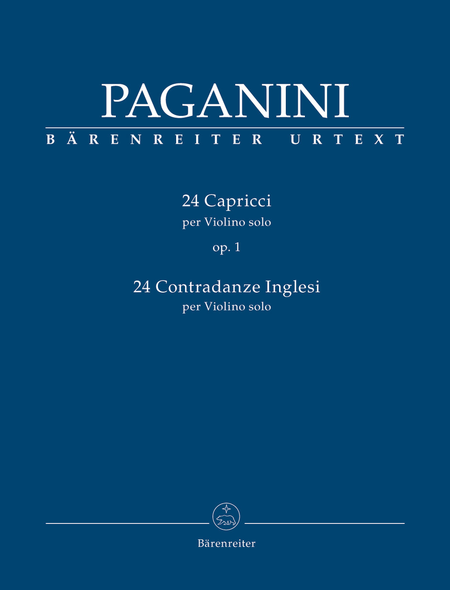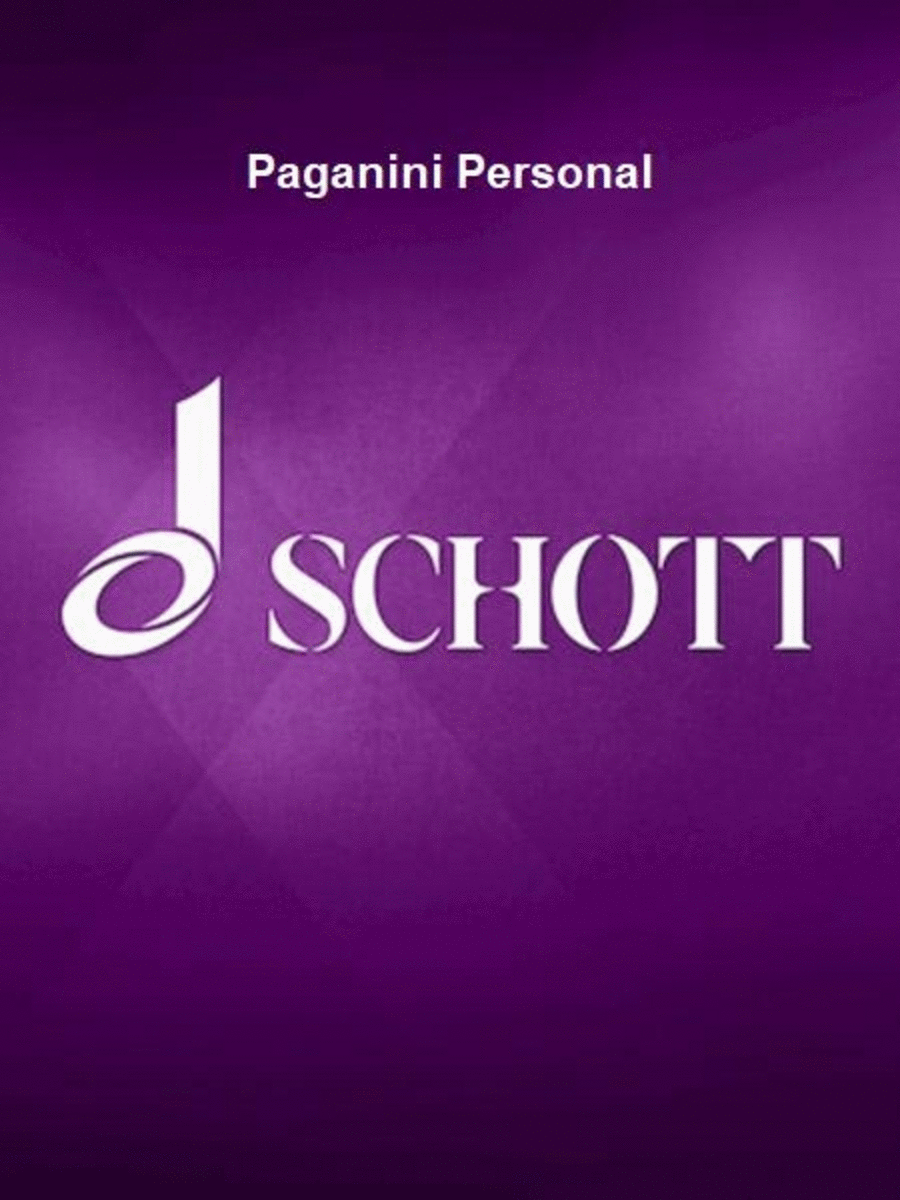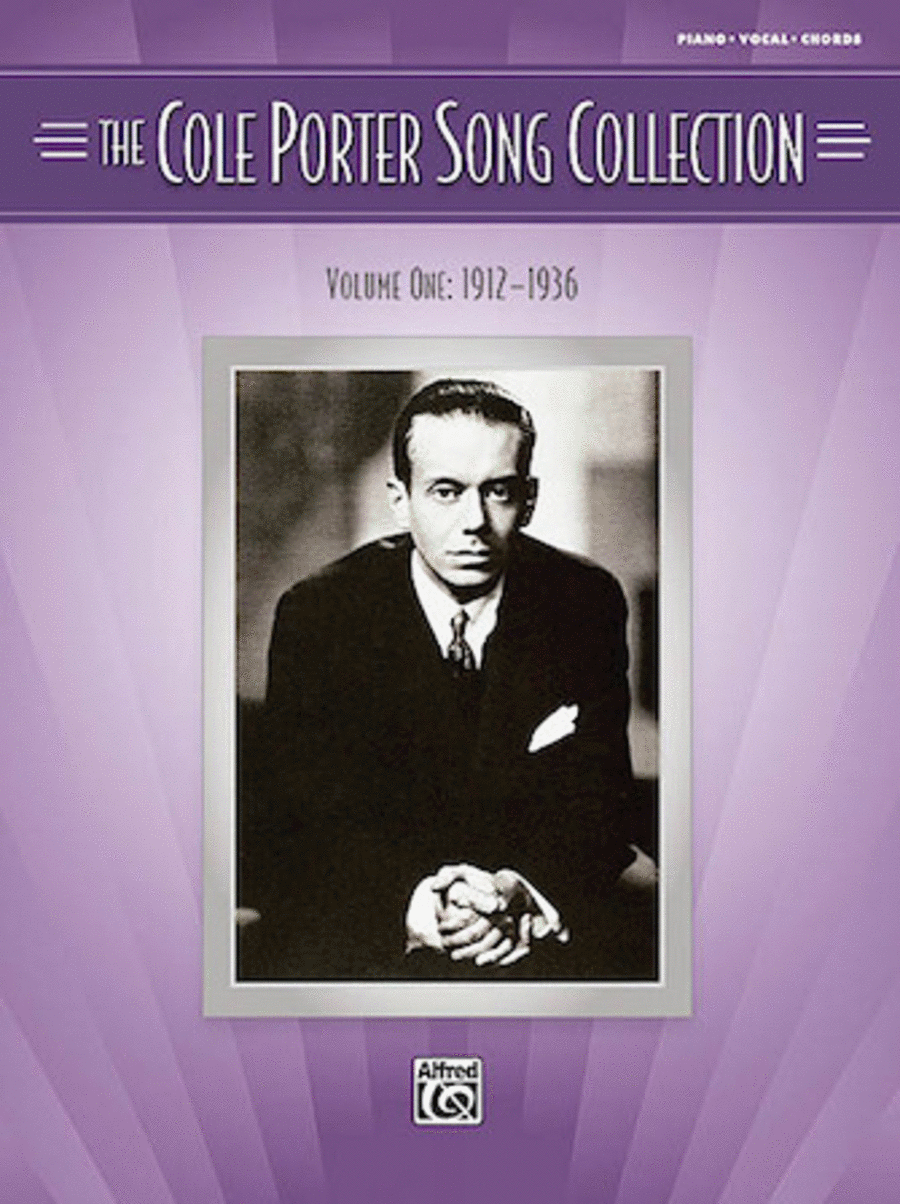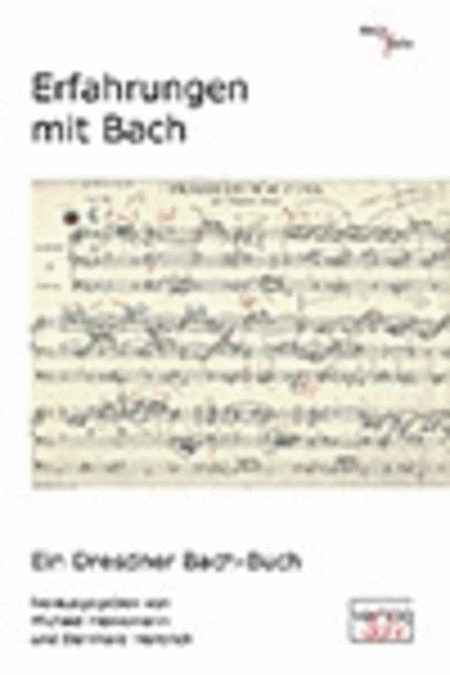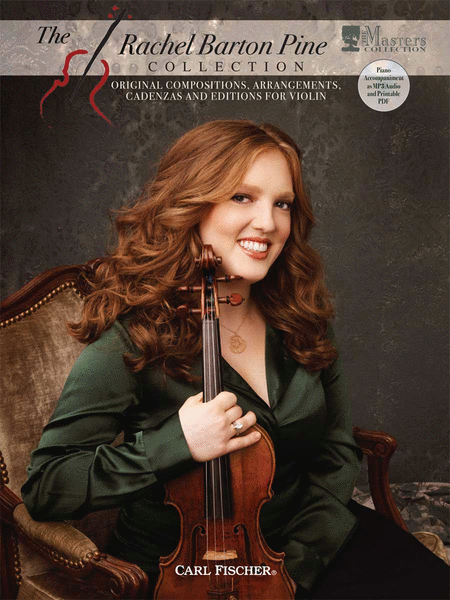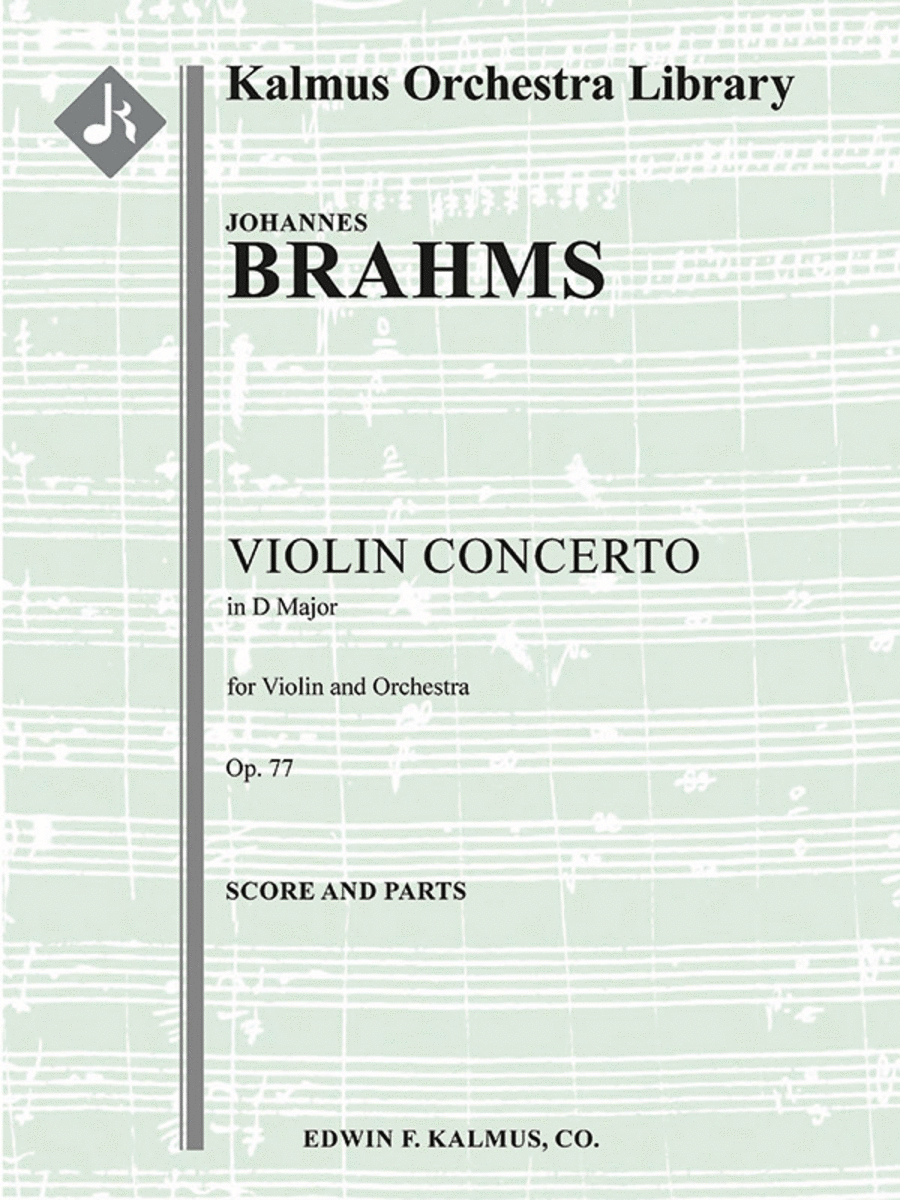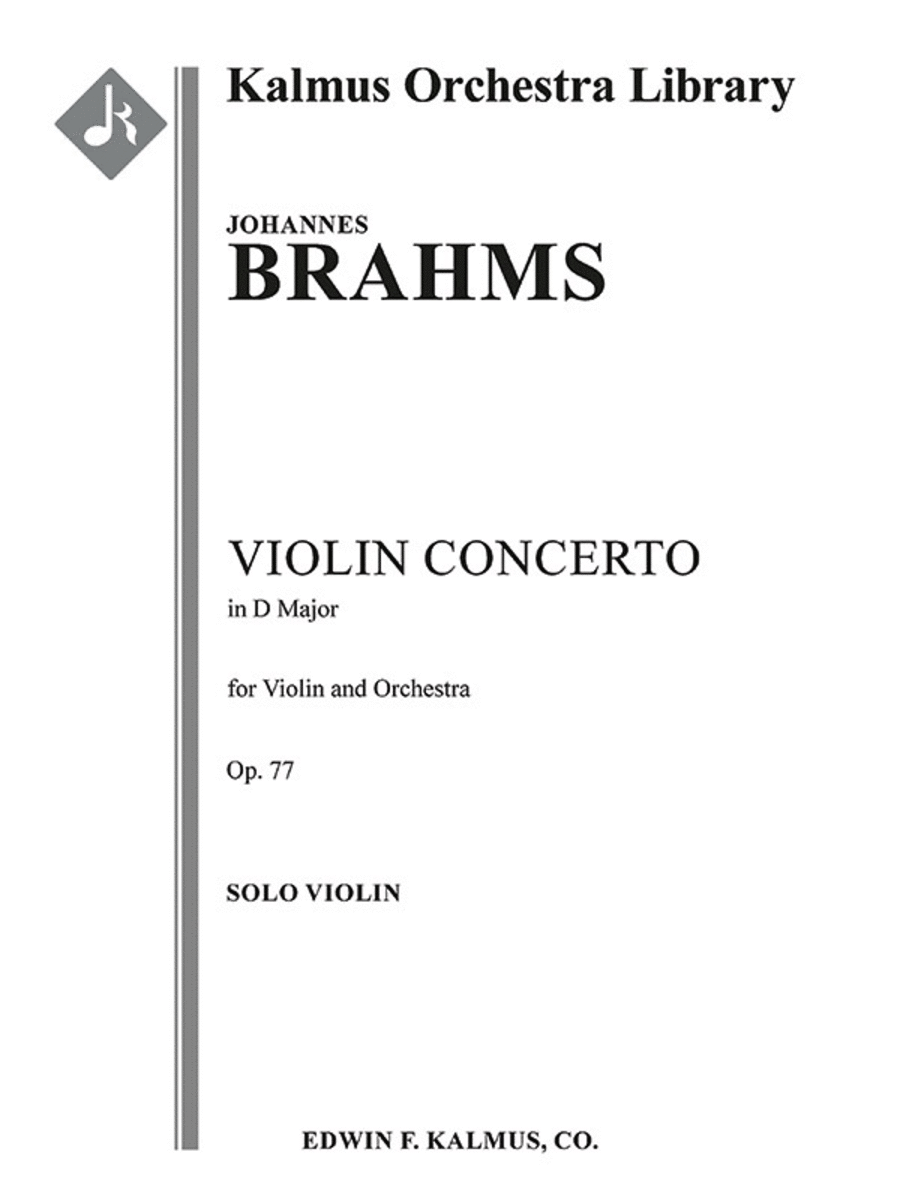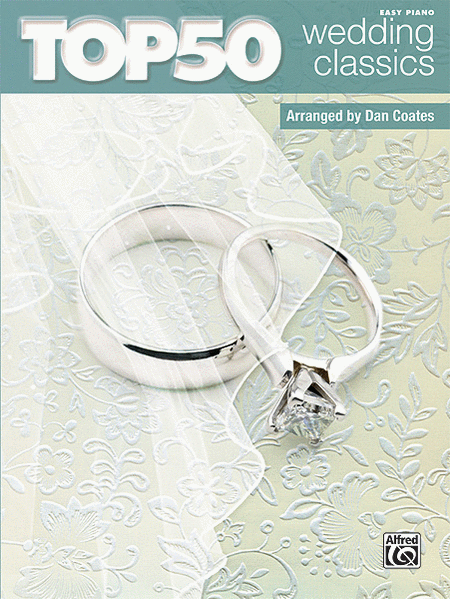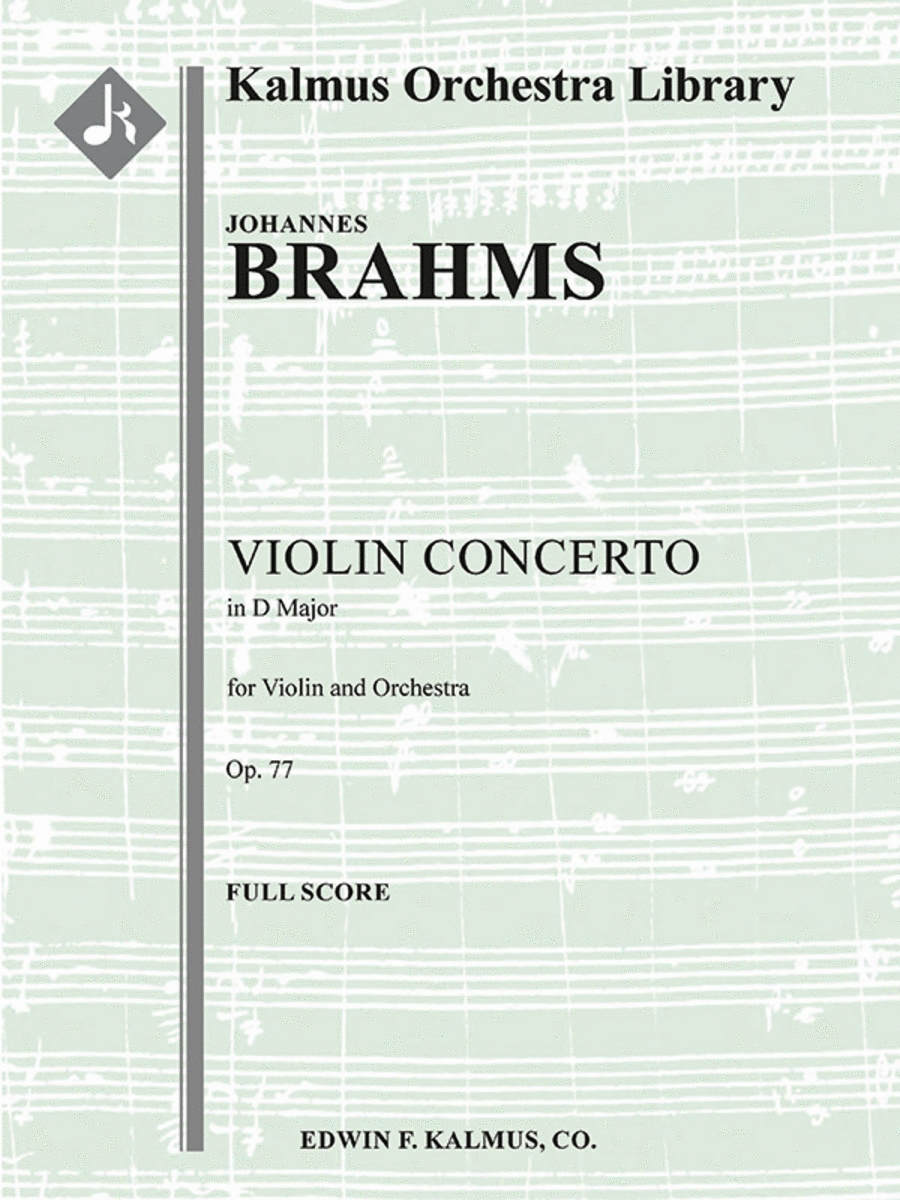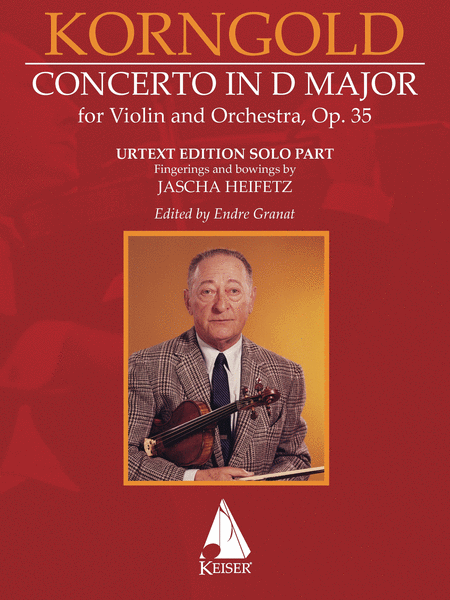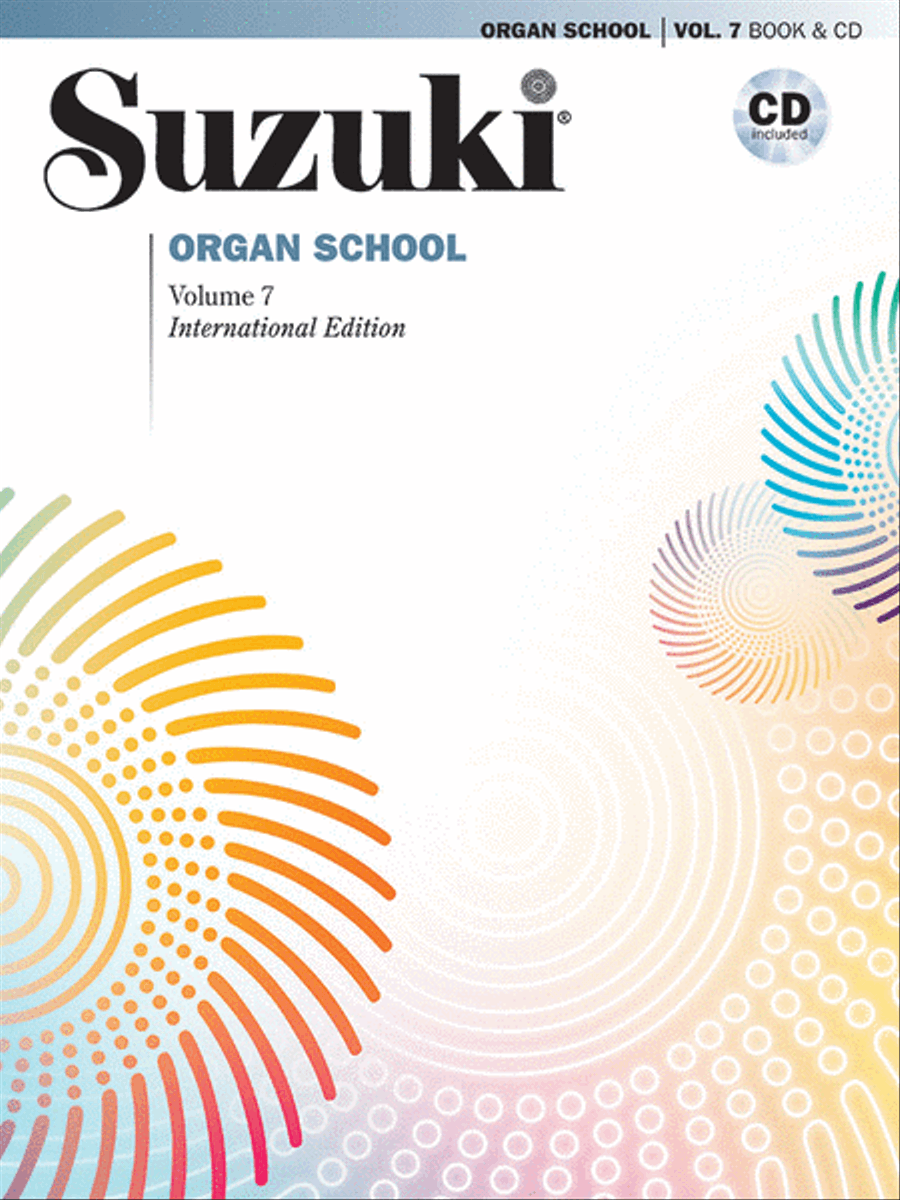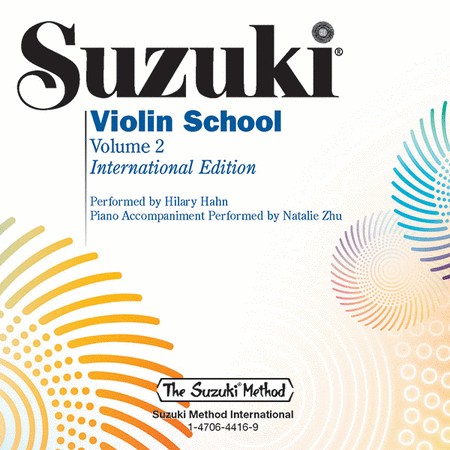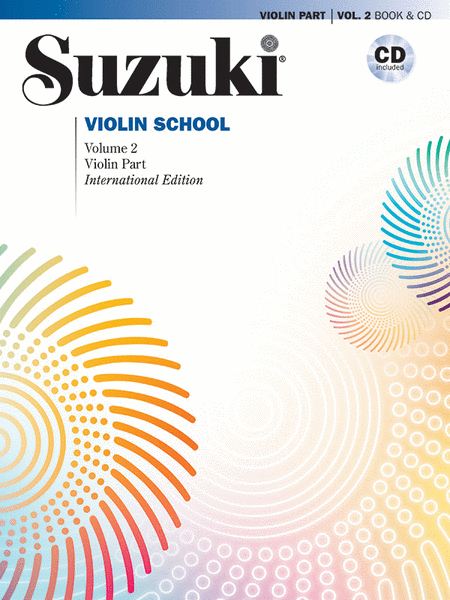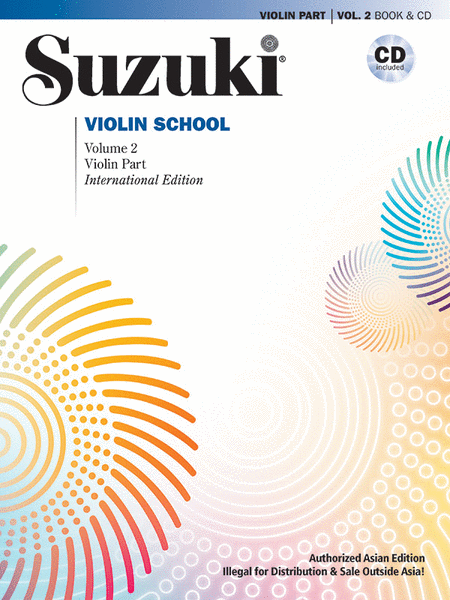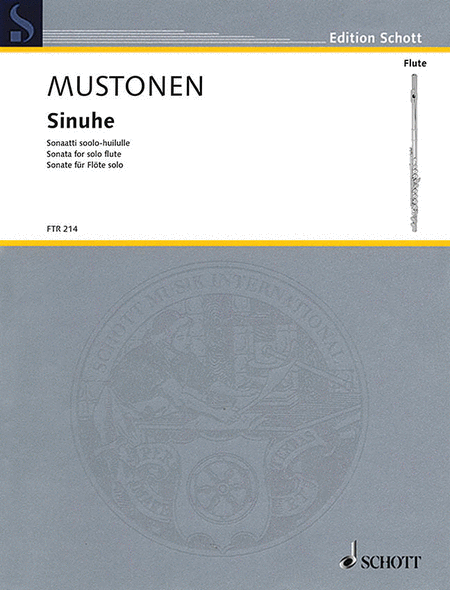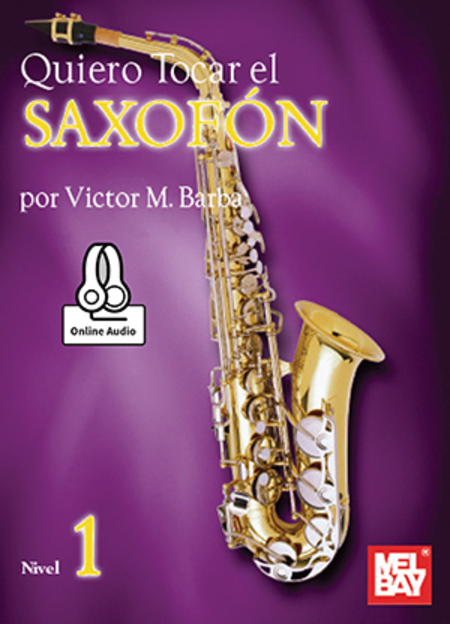|
| Capriccio Per Violino
Solo M.S. 54 (PAGANINI
NICCOLO)
Violon - Avancé
Ricordi
Edizione critica di - Critical edition by Italo Vescovo. Par PAGANINI NICCOLO. T...(+)
Edizione critica di - Critical edition by Italo Vescovo. Par PAGANINI NICCOLO. This Capriccio per violino solo M.S. 54 should be considered as part of the group of short musical dedications that Paganini was in the habit of giving away to friends, colleagues and the personalities he met during his travels. Dated 1828, dedicated to Count Maurizio Dietrichstein, is a truly unique work, not only for the way in which the music is organised (notated on four staves, one for each string) but also because of the way in which it was conceived musically. The concept of polyphony is brought to an extreme level, at least in conceptual and visual terms, in this composition. Its brief structure is reminiscent of a kind of four-part chorale written in score. It is characterised by its lyrical and elegant writing style, where the four voices move in polyphonic fashion, giving birth to an extremely refined harmonic texture. This critical edition is based on the manuscript kept in the Österreichische Nationalbibliothek of Vienna compared with the modern editions. / Niveau : Avancé / Répertoire / Violon
Délais: 2-5 jours - En Stock Fournisseur | | |
| INNO PATRIOTTICO M.S. 81
PER VIOLINO SOLO
(PAGANINI NICCOLO)
Violon [Partition]
Ricordi
Par PAGANINI NICCOLO. Paganini’s Inno patriottico con variazioni for solo viol...(+)
Par PAGANINI NICCOLO. Paganini’s Inno patriottico con variazioni for solo violin M.S. 81 is a composition dating back to the period between 1796 and 1800, during which he also composed works such as the Carmagnola con variazioni M.S. 1 for violin and guitar, the Grande Concerto M.S. 75, the Tema variato for violin M.S. 82 and the Sonata a violin solo M.S. 83. There is not very much background material regarding the piece: the only certainties we have about it are that it dates from his early period, springs from a Genovese environment and has numerous similarities to the Carmagnola con variazioni M.S. 1: both compositions are based on a sprightly popular theme in 6/8 that can be traced back to the Perigordino, a French dance that first appeared in the Ligurian Apennines during the Napoleonic period. The structure of the Inno patriottico con variazioni substantially follows that of the Carmagnola and Tema variato: a theme followed by a series of variations in which Paganini demonstrates his personal concept of variation. This edition is based on a recently rediscovered, non-autograph source owned by the descendants of Eredi Sivori, in combination with the copy held by the Archivio Storico del Comune di Genova and printed sources./ Répertoire / Violon
Délais: En Stock | | |
| Piano Treasury Of Easy
Classical Music Cd
Piano seul [Partition + CD]
Amsco Wise Publications
Compilation. The Piano Treasury of Easy Classical Music is designed to be the co...(+)
Compilation. The Piano Treasury of Easy Classical Music is designed to be the cornerstone of your personal music library. This tremendous piano collection contains 400 pages of great music literature, specially selected and edited for the pianist who loves classical music. No other single volume can provide the wealth of exquisite piano selections contained within these pages. Here you will find the world's favourite inventions, preludes, fugues, minuets, sonata movements, nocturnes, waltzes, mazurkas, intermezzos, romantic short pieces, impressionistic works, and light classics, as well as the most rewarding traditional arrangements of themes from the great symphonies, chamber works, operas, and ballets by the master composers of the past four centuries. / Niveau : Elémentaire / Rép Classique / Recueil / Piano
Délais: 2-5 jours - En Stock Fournisseur | | |
| Southern Gospel Piano -
Lyrical Gospel (ARCHER
DARRELL)
Piano seul [Partition]
Mel Bay
Par ARCHER DARRELL. This collection consists of nine engaging piano arrangements...(+)
Par ARCHER DARRELL. This collection consists of nine engaging piano arrangements of well and lesser-known gospel tunes in an arranging style reminiscent of Floyd Cramer. Pianistic ornaments and flair have been added without obscuring the original melodies. These selections are appropriate for church services, recital programs, informal gatherings, or simply as expressions of personal devotion. Suggested chords have been added to facilitate accompaniment by a partial or complete rhythm section. / Date parution : 2023-08-12/ Recueil / Piano
Délais: 2-5 jours - En Stock Fournisseur | | |
| Suzuki Organ School 7
(SUZUKI SHINICHI)
Orgue [Partition + CD]
Alfred Publishing
Par SUZUKI SHINICHI. The first classical Organ method for children, the Suzuki O...(+)
Par SUZUKI SHINICHI. The first classical Organ method for children, the Suzuki Organ School is based on Dr. Shinichi Suzuki's Mother Tongue Method. The Suzuki Method® of Talent Education is based on Suzuki's view that every child is born with ability, and that people are the product of their environment. According to Suzuki, a world-renowned violinist and teacher, the greatest joy an adult can know comes from developing a child's potential so he/she can express all that is harmonious and best in human beings. Each series of books for a particular instrument in the Suzuki Method is considered a Suzuki music school, such as the Suzuki Organ School . The student listens to therecordings and work with their Suzuki Organ teacher to develop their potential as a musician and as a person. This Suzuki Book and CD is essential for Suzuki Organ lessons. In certain pieces, the authors have placed small phonetic signs above the notes to indicate differentiated non legato playing. In order to develop pedal technique, pedal melodies are included between every manual piece. The included performance CD for Volume 7 is a great tool for Suzuki Organ lessons, encouraging practice while featuring recordings by Lars Hagström and Jeremy Chesman. / Méthode / Méthode / Orgue
Délais: 2-5 jours - En Stock Fournisseur | | |
| Metodo Completo Per
Contrabbasso (ZANCHI
ATTILIO)
Contre Basse
Carisch
Par ZANCHI ATTILIO. Teoria, tecniche e stili del contrabbasso moderno.
Ho inizi...(+)
Par ZANCHI ATTILIO. Teoria, tecniche e stili del contrabbasso moderno.
Ho iniziato a scrivere questo metodo diversi anni fa, praticamente quando ho deciso di cominciare a suonare questo strumento così affascinante ma arduo da padroneggiare.
Procedendo nello studio cercavo d'apprendere le nozioni teoriche ed assimilare i vari passaggi tecnici che dovevo affrontare scrivendo degli esercizi specifici.
Così facendo mi sono ritrovato a riempire decine di pagine di musica che sono divenute successivamente la parte principale di questo libro.
I primi metodi che ho studiato sono stati gli ottimi libri classici 'Billè” e 'Simandl” che procedono in modo progressivo esplorando la tastiera nelle varie posizioni - in ogni capitolo si trovano esercizi basati sulle varie scale.
Ho trovato molto utile questo sistema ed ho deciso di procedere gradualmente con lo stesso procedimento scrivendo però dei brani in stili più moderni quali Jazz, Blues e Latin.
Gli esercizi utili a sviluppare la tecnica del pizzicato e l'agilità delle dita della mano destra sono ispirati agli studi che ho fatto con il grande contrabbassista e didatta Dave Holland e che poi ho elaborato in modo personale.
Dopo una prima stesura ho iniziato a far studiare gli esercizi ai miei allievi ed ho avuto modo di revisionarli ed adattarli alle esigenze didattiche specifiche.
Nel metodo sono contenuti 66 brani in vari stili costruiti con le diverse scale maggiori, minori naturali, minori melodiche ed armoniche in tutte le tonalità.
Il libro contiene inoltre studi tecnici dettagliati relativi alla tecnica del pizzicato ed a quella con l'arco.
Nel manuale si possono trovare inoltre diverse spiegazioni teoriche utili a completare la propria preparazione nel campo della musica moderna./ Méthode / Contrebasse
Délais: 2-5 jours - En Stock Fournisseur | | |
| CHOPIN F. - COMPLETE
WORKS VOL.13 - CONCERT
ALLEGRO VARIATIONS
Piano seul
PWM (Polskie Wydawnictwo Muzyczne)
These present Chopin's virtuosic technique to the highest degree. The composer d...(+)
These present Chopin's virtuosic technique to the highest degree. The composer derived his model from classical Viennese and the fashionable stile brillant compositions. Personal experience related to the concert practice of improvisation on given themes also had a decisive influence. Themes for Chopin's variations come from the song and opera repertoire. Allegro de Concerto A-Dur op 46Variations sur un air national allemandVariations brillantes sur le rondeau favori op 12Souvenir de PaganiniVariation sur le marche des puritains de Bellini / Piano / Pwm
Délais: Sur commande | | |
| Violin Concerto in D
Major, Op. 35 (KORNGOLD
ERICH WOLFGANG)
Violon [Partition]
Hal Leonard
Critical Edition Violin Solo Part. Par KORNGOLD ERICH WOLFGANG. This new edition...(+)
Critical Edition Violin Solo Part. Par KORNGOLD ERICH WOLFGANG. This new edition of the violin solo part to the Korngold Violin Concerto in D Major is the first-ever to include Jascha Heifetz's performance notations, edited by Endre Granat, one of his star proteges. Born in Austria, Korngold was forced into US exile by the annexation of Austria by the Nazis. He vowed to give up composing anything other than film music until Hitler was defeated. With the end of World War II, he retired from films to concentrate on music for the concert hall. The violin concerto was the first such work that Korngold wrote following some initial persuasion from violinist and fellow émigré Bronislaw Huberman. Korngold was hurt by the assumption that he had sold his integrity to Hollywood. He was thus determined to prove himself with a work that combined vitality and superb craftsmanship. Korngold composed his Violin Concerto in D major, Op.35, in 1945, dedicating it to Alma Mahler, the widow of his childhood mentor, Gustav Mahler. The work was premiered on February, 15 1947 by Jascha Heifetz and the St. Louis Symphony under conductor Vladimir Golschmann. It received the most enthusiastic ovation in St. Louis concert history at the time. On March 30, 1947, Heifetz played the concerto in Carnegie Hall with the New York Philharmonic conducted by Efrem Kurtz: the broadcast performance was recorded on transcription discs. Heifetz's performance launched the work into the standard repertoire, and it quickly became Korngold's most popular piece. Concerning Heifetz's performance of the work, the composer wrote, In spite of the demand for virtuosity in the finale, the work with its many melodic and lyric episodes was contemplated more for a Caruso than for a Paganini. It is needless to say how delighted I am to have my concerto performed by Caruso and Paganini in one person: Jascha Heifetz./ Répertoire / Violon
Délais: 2-5 jours - En Stock Fournisseur | | |
| Sinuhe
Flûte traversière
Schott
Sinuhe the Egyptian is a historical novel written in 1945 by the Finnish author ...(+)
Sinuhe the Egyptian is a historical novel written in 1945 by the Finnish author Mika Waltari (* 19. SeptemberHelsinki). He was one of the best known authors in Finland and his works were translated into 30 languages. 1908 in Helsinki, ? 26. August 1979 also in This is the story of the adventures of the doctor SinuheCrete and other regions of the known world at that time. who lived from 1390 to1335 B.C. who was initially the personal physician at the court of the Pharaoh Akhenaten before subsequently visiting Babylon, Waltari was inspired by the Ancient Egyptian text The Story of Sinuhe which is considered to be one of the earliest literary works (20th century B.C.). The author additionally undertook comprehensive historical studies, and the novel with its extensive cultural history and customs of the Orient in pre-Christian times became a worldwide success. The novel also gained recognition among Egyptologists. Sinuhe the Egyptian was in turn an inspiration for the composer Olli Mustonen to create a work for the 'archaic? instrument the oboe. The original version of this two-movement piece additionally fulfilled the composer's wish to dedicate a composition to his wife Sole who is also an oboist.The current version for flute was written for the Danish flutist Janne Thomsen. / Flûte
Délais: 2-5 jours - En Stock Fournisseur | | |
| Paganini Personal
Marimba, Piano (duo)
Schott
25.50 EUR - vendu par LMI-partitions
Délais: 2-5 jours - En Stock Fournisseur | | |
| 6 Mehrstimmige Etuden Und
(ERNST)
Violon
Sikorski
Par ERNST. A terrific collection of technical and dynamic studies to aid the dev...(+)
Par ERNST. A terrific collection of technical and dynamic studies to aid the development of Violin polyophonics and ornamentation. Ernst was a talented and virtuoso Violinst and a contemporary of Paganini and these studies demonstrate his great ability despite the lack of a distinct artistic personality. This collection udies for Violin also includes a transcription of Franz Schuberts Erlkonig Op. 26/ Etude / Violon
Délais: 2-5 jours - En Stock Fournisseur | | |
| ZUR - SYBERIA : THE WORLD
BEFORE - PIANO OU CLAVIER
Piano seul
Hal Leonard
12 arrangements pour piano solo tirés de la bande-son passionnée et personnell...(+)
12 arrangements pour piano solo tirés de la bande-son passionnée et personnelle du jeu d\'Inon Zur, qui met en scène un jeune pianiste. Les titres comprennent : Bitter Liberation - Dana Roze - Dreams to Be Broken - Four Legs - Hymn of Vaghen - Kate Walker - Leon Kobatis - A Nice Person - A Quiet Place - Rising for Adventure - Shattered Destiny - Those Lost Days. / Partitions classique / Piano - instruments à clavier / Piano / HAL LEONARD
Délais: Sur commande | | |
| Ali E Radici (RAMAZZOTTI
EROS)
Piano, Voix et Guitare
Carisch
Par RAMAZZOTTI EROS. Pop / Pop and rock / Recueil / Piano, Chant et Guitare
Délais: En Stock | | |
| At Christmas Time
Divers [Partition]
Fennica Gehrman
150 Weihnachtslieder. 150 Christmas Songs/ Recueil / Divers
Délais: 2-5 jours - En Stock Fournisseur | |
|
|
|
| Inno Patriottico
Violon
Ricordi
For Solo Violin. Composed by Nicolo Paganini (1782-1840). Edited by Italo Ve...(+)
For Solo Violin. Composed
by
Nicolo Paganini
(1782-1840).
Edited by Italo Vescovo.
Ricordi. Softcover.
Ricordi
#NR142299. Published by
Ricordi
$14.99 - Voir plus => AcheterDélais: 24 hours - In Stock | | | |
| Transcriptions of Lieder
Piano seul
Carl Fischer
Chamber Music Piano SKU: CF.PL1056 Composed by Clara Wieck-Schumann, Fran...(+)
Chamber Music Piano
SKU: CF.PL1056
Composed by Clara
Wieck-Schumann, Franz
Schubert, and Robert
Schumann. Edited by
Nicholas Hopkins.
Collection. With Standard
notation. 128 pages. Carl
Fischer Music #PL1056.
Published by Carl Fischer
Music (CF.PL1056).
ISBN 9781491153390.
UPC: 680160910892.
Transcribed by Franz
Liszt. Introduction
It is true that Schubert
himself is somewhat to
blame for the very
unsatisfactory manner in
which his admirable piano
pieces are treated. He
was too immoderately
productive, wrote
incessantly, mixing
insignificant with
important things, grand
things with mediocre
work, paid no heed to
criticism, and always
soared on his wings. Like
a bird in the air, he
lived in music and sang
in angelic fashion.
--Franz Liszt, letter to
Dr. S. Lebert (1868) Of
those compositions that
greatly interest me,
there are only Chopin's
and yours. --Franz Liszt,
letter to Robert Schumann
(1838) She [Clara
Schumann] was astounded
at hearing me. Her
compositions are really
very remarkable,
especially for a woman.
There is a hundred times
more creativity and real
feeling in them than in
all the past and present
fantasias by Thalberg.
--Franz Liszt, letter to
Marie d'Agoult (1838)
Chretien Urhan
(1790-1845) was a
Belgian-born violinist,
organist and composer who
flourished in the musical
life of Paris in the
early nineteenth century.
According to various
accounts, he was deeply
religious, harshly
ascetic and wildly
eccentric, though revered
by many important and
influential members of
the Parisian musical
community. Regrettably,
history has forgotten
Urhan's many musical
achievements, the most
important of which was
arguably his pioneering
work in promoting the
music of Franz Schubert.
He devoted much of his
energies to championing
Schubert's music, which
at the time was unknown
outside of Vienna.
Undoubtedly, Urhan was
responsible for
stimulating this
enthusiasm in Franz
Liszt; Liszt regularly
heard Urhan's organ
playing in the
St.-Vincent-de-Paul
church in Paris, and the
two became personal
acquaintances. At
eighteen years of age,
Liszt was on the verge of
establishing himself as
the foremost pianist in
Europe, and this
awakening to Schubert's
music would prove to be a
profound experience.
Liszt's first travels
outside of his native
provincial Hungary were
to Vienna in 1821-1823,
where his father enrolled
him in studies with Carl
Czerny (piano) and
Antonio Salieri (music
theory). Both men had
important involvements
with Schubert; Czerny
(like Urhan) as performer
and advocate of
Schubert's music and
Salieri as his theory and
composition teacher from
1813-1817. Curiously,
Liszt and Schubert never
met personally, despite
their geographical
proximity in Vienna
during these years.
Inevitably, legends later
arose that the two had
been personal
acquaintances, although
Liszt would dismiss these
as fallacious: I never
knew Schubert personally,
he was once quoted as
saying. Liszt's initial
exposure to Schubert's
music was the Lieder,
what Urhan prized most of
all. He accompanied the
tenor Benedict
Randhartinger in numerous
performances of
Schubert's Lieder and
then, perhaps realizing
that he could benefit the
composer more on his own
terms, transcribed a
number of the Lieder for
piano solo. Many of these
transcriptions he would
perform himself on
concert tour during the
so-called Glanzzeit, or
time of splendor from
1839-1847. This publicity
did much to promote
reception of Schubert's
music throughout Europe.
Once Liszt retired from
the concert stage and
settled in Weimar as a
conductor in the 1840s,
he continued to perform
Schubert's orchestral
music, his Symphony No. 9
being a particular
favorite, and is credited
with giving the world
premiere performance of
Schubert's opera Alfonso
und Estrella in 1854. At
this time, he
contemplated writing a
biography of the
composer, which
regrettably remained
uncompleted. Liszt's
devotion to Schubert
would never waver.
Liszt's relationship with
Robert and Clara Schumann
was far different and far
more complicated; by
contrast, they were all
personal acquaintances.
What began as a
relationship of mutual
respect and admiration
soon deteriorated into
one of jealousy and
hostility, particularly
on the Schumann's part.
Liszt's initial contact
with Robert's music
happened long before they
had met personally, when
Liszt published an
analysis of Schumann's
piano music for the
Gazette musicale in 1837,
a gesture that earned
Robert's deep
appreciation. In the
following year Clara met
Liszt during a concert
tour in Vienna and
presented him with more
of Schumann's piano
music. Clara and her
father Friedrich Wieck,
who accompanied Clara on
her concert tours, were
quite taken by Liszt: We
have heard Liszt. He can
be compared to no other
player...he arouses
fright and astonishment.
His appearance at the
piano is indescribable.
He is an original...he is
absorbed by the piano.
Liszt, too, was impressed
with Clara--at first the
energy, intelligence and
accuracy of her piano
playing and later her
compositions--to the
extent that he dedicated
to her the 1838 version
of his Etudes d'execution
transcendante d'apres
Paganini. Liszt had a
closer personal
relationship with Clara
than with Robert until
the two men finally met
in 1840. Schumann was
astounded by Liszt's
piano playing. He wrote
to Clara that Liszt had
played like a god and had
inspired indescribable
furor of applause. His
review of Liszt even
included a heroic
personification with
Napoleon. In Leipzig,
Schumann was deeply
impressed with Liszt's
interpretations of his
Noveletten, Op. 21 and
Fantasy in C Major, Op.
17 (dedicated to Liszt),
enthusiastically
observing that, I feel as
if I had known you twenty
years. Yet a variety of
events followed that
diminished Liszt's glory
in the eyes of the
Schumanns. They became
critical of the cult-like
atmosphere that arose
around his recitals, or
Lisztomania as it came to
be called; conceivably,
this could be attributed
to professional jealousy.
Clara, in particular,
came to loathe Liszt,
noting in a letter to
Joseph Joachim, I despise
Liszt from the depths of
my soul. She recorded a
stunning diary entry a
day after Liszt's death,
in which she noted, He
was an eminent keyboard
virtuoso, but a dangerous
example for the
young...As a composer he
was terrible. By
contrast, Liszt did not
share in these negative
sentiments; no evidence
suggests that he had any
ill-regard for the
Schumanns. In Weimar, he
did much to promote
Schumann's music,
conducting performances
of his Scenes from Faust
and Manfred, during a
time in which few
orchestras expressed
interest, and premiered
his opera Genoveva. He
later arranged a benefit
concert for Clara
following Robert's death,
featuring Clara as
soloist in Robert's Piano
Concerto, an event that
must have been
exhilarating to witness.
Regardless, her opinion
of him would never
change, despite his
repeated gestures of
courtesy and respect.
Liszt's relationship with
Schubert was a spiritual
one, with music being the
one and only link between
the two men. That with
the Schumanns was
personal, with music
influenced by a hero
worship that would
aggravate the
relationship over time.
Nonetheless, Liszt would
remain devoted to and
enthusiastic for the
music and achievements of
these composers. He would
be a vital force in
disseminating their music
to a wider audience, as
he would be with many
other composers
throughout his career.
His primary means for
accomplishing this was
the piano transcription.
Liszt and the
Transcription
Transcription versus
Paraphrase Transcription
and paraphrase were
popular terms in
nineteenth-century music,
although certainly not
unique to this period.
Musicians understood that
there were clear
distinctions between
these two terms, but as
is often the case these
distinctions could be
blurred. Transcription,
literally writing over,
entails reworking or
adapting a piece of music
for a performance medium
different from that of
its original; arrangement
is a possible synonym.
Adapting is a key part of
this process, for the
success of a
transcription relies on
the transcriber's ability
to adapt the piece to the
different medium. As a
result, the pre-existing
material is generally
kept intact, recognizable
and intelligible; it is
strict, literal,
objective. Contextual
meaning is maintained in
the process, as are
elements of style and
form. Paraphrase, by
contrast, implies
restating something in a
different manner, as in a
rewording of a document
for reasons of clarity.
In nineteenth-century
music, paraphrasing
indicated elaborating a
piece for purposes of
expressive virtuosity,
often as a vehicle for
showmanship. Variation is
an important element, for
the source material may
be varied as much as the
paraphraser's imagination
will allow; its purpose
is metamorphosis.
Transcription is adapting
and arranging;
paraphrasing is
transforming and
reworking. Transcription
preserves the style of
the original; paraphrase
absorbs the original into
a different style.
Transcription highlights
the original composer;
paraphrase highlights the
paraphraser.
Approximately half of
Liszt's compositional
output falls under the
category of transcription
and paraphrase; it is
noteworthy that he never
used the term
arrangement. Much of his
early compositional
activities were
transcriptions and
paraphrases of works of
other composers, such as
the symphonies of
Beethoven and Berlioz,
vocal music by Schubert,
and operas by Donizetti
and Bellini. It is
conceivable that he
focused so intently on
work of this nature early
in his career as a means
to perfect his
compositional technique,
although transcription
and paraphrase continued
well after the technique
had been mastered; this
might explain why he
drastically revised and
rewrote many of his
original compositions
from the 1830s (such as
the Transcendental Etudes
and Paganini Etudes) in
the 1850s. Charles Rosen,
a sympathetic interpreter
of Liszt's piano works,
observes, The new
revisions of the
Transcendental Etudes are
not revisions but concert
paraphrases of the old,
and their art lies in the
technique of
transformation. The
Paganini etudes are piano
transcriptions of violin
etudes, and the
Transcendental Etudes are
piano transcriptions of
piano etudes. The
principles are the same.
He concludes by noting,
Paraphrase has shaded off
into
composition...Composition
and paraphrase were not
identical for him, but
they were so closely
interwoven that
separation is impossible.
The significance of
transcription and
paraphrase for Liszt the
composer cannot be
overstated, and the
mutual influence of each
needs to be better
understood. Undoubtedly,
Liszt the composer as we
know him today would be
far different had he not
devoted so much of his
career to transcribing
and paraphrasing the
music of others. He was
perhaps one of the first
composers to contend that
transcription and
paraphrase could be
genuine art forms on
equal par with original
pieces; he even claimed
to be the first to use
these two terms to
describe these classes of
arrangements. Despite the
success that Liszt
achieved with this type
of work, others viewed it
with circumspection and
criticism. Robert
Schumann, although deeply
impressed with Liszt's
keyboard virtuosity, was
harsh in his criticisms
of the transcriptions.
Schumann interpreted them
as indicators that
Liszt's virtuosity had
hindered his
compositional development
and suggested that Liszt
transcribed the music of
others to compensate for
his own compositional
deficiencies.
Nonetheless, Liszt's
piano transcriptions,
what he sometimes called
partitions de piano (or
piano scores), were
instrumental in promoting
composers whose music was
unknown at the time or
inaccessible in areas
outside of major European
capitals, areas that
Liszt willingly toured
during his Glanzzeit. To
this end, the
transcriptions had to be
literal arrangements for
the piano; a Beethoven
symphony could not be
introduced to an
unknowing audience if its
music had been subjected
to imaginative
elaborations and
variations. The same
would be true of the 1833
transcription of
Berlioz's Symphonie
fantastique (composed
only three years
earlier), the
astonishingly novel
content of which would
necessitate a literal and
intelligible rendering.
Opera, usually more
popular and accessible
for the general public,
was a different matter,
and in this realm Liszt
could paraphrase the
original and manipulate
it as his imagination
would allow without
jeopardizing its
reception; hence, the
paraphrases on the operas
of Bellini, Donizetti,
Mozart, Meyerbeer and
Verdi. Reminiscence was
another term coined by
Liszt for the opera
paraphrases, as if the
composer were reminiscing
at the keyboard following
a memorable evening at
the opera. Illustration
(reserved on two
occasions for Meyerbeer)
and fantasy were
additional terms. The
operas of Wagner were
exceptions. His music was
less suited to paraphrase
due to its general lack
of familiarity at the
time. Transcription of
Wagner's music was thus
obligatory, as it was of
Beethoven's and Berlioz's
music; perhaps the
composer himself insisted
on this approach. Liszt's
Lieder Transcriptions
Liszt's initial
encounters with
Schubert's music, as
mentioned previously,
were with the Lieder. His
first transcription of a
Schubert Lied was Die
Rose in 1833, followed by
Lob der Tranen in 1837.
Thirty-nine additional
transcriptions appeared
at a rapid pace over the
following three years,
and in 1846, the Schubert
Lieder transcriptions
would conclude, by which
point he had completed
fifty-eight, the most of
any composer. Critical
response to these
transcriptions was highly
favorable--aside from the
view held by
Schumann--particularly
when Liszt himself played
these pieces in concert.
Some were published
immediately by Anton
Diabelli, famous for the
theme that inspired
Beethoven's variations.
Others were published by
the Viennese publisher
Tobias Haslinger (one of
Beethoven's and
Schubert's publishers in
the 1820s), who sold his
reserves so quickly that
he would repeatedly plead
for more. However,
Liszt's enthusiasm for
work of this nature soon
became exhausted, as he
noted in a letter of 1839
to the publisher
Breitkopf und Hartel:
That good Haslinger
overwhelms me with
Schubert. I have just
sent him twenty-four new
songs (Schwanengesang and
Winterreise), and for the
moment I am rather tired
of this work. Haslinger
was justified in his
demands, for the Schubert
transcriptions were
received with great
enthusiasm. One Gottfried
Wilhelm Fink, then editor
of the Allgemeine
musikalische Zeitung,
observed of these
transcriptions: Nothing
in recent memory has
caused such sensation and
enjoyment in both
pianists and audiences as
these arrangements...The
demand for them has in no
way been satisfied; and
it will not be until
these arrangements are
seen on pianos
everywhere. They have
indeed made quite a
splash. Eduard Hanslick,
never a sympathetic
critic of Liszt's music,
acknowledged thirty years
after the fact that,
Liszt's transcriptions of
Schubert Lieder were
epoch-making. There was
hardly a concert in which
Liszt did not have to
play one or two of
them--even when they were
not listed on the
program. These
transcriptions quickly
became some of his most
sough-after pieces,
despite their extreme
technical demands.
Leading pianists of the
day, such as Clara Wieck
and Sigismond Thalberg,
incorporated them into
their concert programs
immediately upon
publication. Moreover,
the transcriptions would
serve as inspirations for
other composers, such as
Stephen Heller, Cesar
Franck and later Leopold
Godowsky, all of whom
produced their own
transcriptions of
Schubert's Lieder. Liszt
would transcribe the
Lieder of other composers
as well, including those
by Mendelssohn, Chopin,
Anton Rubinstein and even
himself. Robert Schumann,
of course, would not be
ignored. The first
transcription of a
Schumann Lied was the
celebrated Widmung from
Myrten in 1848, the only
Schumann transcription
that Liszt completed
during the composer's
lifetime. (Regrettably,
there is no evidence of
Schumann's regard of this
transcription, or even if
he was aware of it.) From
the years 1848-1881,
Liszt transcribed twelve
of Robert Schumann's
Lieder (including one
orchestral Lied) and
three of Clara (one from
each of her three
published Lieder cycles);
he would transcribe no
other works of these two
composers. The Schumann
Lieder transcriptions,
contrary to those of
Schubert, are literal
arrangements, posing, in
general, far fewer
demands on the pianist's
technique. They are
comparatively less
imaginative in their
treatment of the original
material. Additionally,
they seem to have been
less valued in their day
than the Schubert
transcriptions, and it is
noteworthy that none of
the Schumann
transcriptions bear
dedications, as most of
the Schubert
transcriptions do. The
greatest challenge posed
by Lieder transcriptions,
regardless of the
composer or the nature of
the transcription, was to
combine the vocal and
piano parts of the
original such that the
character of each would
be preserved, a challenge
unique to this form of
transcription. Each part
had to be intact and
aurally recognizable, the
vocal line in particular.
Complications could be
manifold in a Lied that
featured dissimilar
parts, such as Schubert's
Auf dem Wasser zu singen,
whose piano accompaniment
depicts the rocking of
the boat on the
shimmering waves while
the vocal line reflects
on the passing of time.
Similar complications
would be encountered in
Gretchen am Spinnrade, in
which the ubiquitous
sixteenth-note pattern in
the piano's right hand
epitomizes the
ever-turning spinning
wheel over which the
soprano voice expresses
feelings of longing and
heartache. The resulting
transcriptions for solo
piano would place
exceptional demands on
the pianist. The
complications would be
far less imposing in
instances in which voice
and piano were less
differentiated, as in
many of Schumann's Lieder
that Liszt transcribed.
The piano parts in these
Lieder are true
accompaniments for the
voice, providing harmonic
foundation and rhythmic
support by doubling the
vocal line throughout.
The transcriptions, thus,
are strict and literal,
with far fewer demands on
both pianist and
transcriber. In all of
Liszt's Lieder
transcriptions,
regardless of the way in
which the two parts are
combined, the melody
(i.e. the vocal line) is
invariably the focal
point; the melody should
sing on the piano, as if
it were the voice. The
piano part, although
integral to contributing
to the character of the
music, is designed to
function as
accompaniment. A singing
melody was a crucial
objective in
nineteenth-century piano
performance, which in
part might explain the
zeal in transcribing and
paraphrasing vocal music
for the piano. Friedrich
Wieck, father and teacher
of Clara Schumann,
stressed this point
repeatedly in his 1853
treatise Clavier und
Gesang (Piano and Song):
When I speak in general
of singing, I refer to
that species of singing
which is a form of
beauty, and which is a
foundation for the most
refined and most perfect
interpretation of music;
and, above all things, I
consider the culture of
beautiful tones the basis
for the finest possible
touch on the piano. In
many respects, the piano
and singing should
explain and supplement
each other. They should
mutually assist in
expressing the sublime
and the noble, in forms
of unclouded beauty. Much
of Liszt's piano music
should be interpreted
with this concept in
mind, the Lieder
transcriptions and opera
paraphrases, in
particular. To this end,
Liszt provided numerous
written instructions to
the performer to
emphasize the vocal line
in performance, with
Italian directives such
as un poco marcato il
canto, accentuato assai
il canto and ben
pronunziato il canto.
Repeated indications of
cantando,singend and
espressivo il canto
stress the significance
of the singing tone. As
an additional means of
achieving this and
providing the performer
with access to the
poetry, Liszt insisted,
at what must have been a
publishing novelty at the
time, on printing the
words of the Lied in the
music itself. Haslinger,
seemingly oblivious to
Liszt's intent, initially
printed the poems of the
early Schubert
transcriptions separately
inside the front covers.
Liszt argued that the
transcriptions must be
reprinted with the words
underlying the notes,
exactly as Schubert had
done, a request that was
honored by printing the
words above the
right-hand staff. Liszt
also incorporated a
visual scheme for
distinguishing voice and
accompaniment, influenced
perhaps by Chopin, by
notating the
accompaniment in cue
size. His transcription
of Robert Schumann's
Fruhlings Ankunft
features the vocal line
in normal size, the piano
accompaniment in reduced
size, an unmistakable
guide in a busy texture
as to which part should
be emphasized: Example 1.
Schumann-Liszt Fruhlings
Ankunft, mm. 1-2. The
same practice may be
found in the
transcription of
Schumann's An die Turen
will ich schleichen. In
this piece, the performer
must read three staves,
in which the baritone
line in the central staff
is to be shared between
the two hands based on
the stem direction of the
notes: Example 2.
Schumann-Liszt An die
Turen will ich
schleichen, mm. 1-5. This
notational practice is
extremely beneficial in
this instance, given the
challenge of reading
three staves and the
manner in which the vocal
line is performed by the
two hands. Curiously,
Liszt did not use this
practice in other
transcriptions.
Approaches in Lieder
Transcription Liszt
adopted a variety of
approaches in his Lieder
transcriptions, based on
the nature of the source
material, the ways in
which the vocal and piano
parts could be combined
and the ways in which the
vocal part could sing.
One approach, common with
strophic Lieder, in which
the vocal line would be
identical in each verse,
was to vary the register
of the vocal part. The
transcription of Lob der
Tranen, for example,
incorporates three of the
four verses of the
original Lied, with the
register of the vocal
line ascending one octave
with each verse (from low
to high), as if three
different voices were
participating. By the
conclusion, the music
encompasses the entire
range of Liszt's keyboard
to produce a stunning
climactic effect, and the
variety of register of
the vocal line provides a
welcome textural variety
in the absence of the
words. The three verses
of the transcription of
Auf dem Wasser zu singen
follow the same approach,
in which the vocal line
ascends from the tenor,
to the alto and to the
soprano registers with
each verse.
Fruhlingsglaube adopts
the opposite approach, in
which the vocal line
descends from soprano in
verse 1 to tenor in verse
2, with the second part
of verse 2 again resuming
the soprano register;
this is also the case in
Das Wandern from
Mullerlieder. Gretchen am
Spinnrade posed a unique
problem. Since the poem's
narrator is female, and
the poem represents an
expression of her longing
for her lover Faust,
variation of the vocal
line's register, strictly
speaking, would have been
impractical. For this
reason, the vocal line
remains in its original
register throughout,
relentlessly colliding
with the sixteenth-note
pattern of the
accompaniment. One
exception may be found in
the fifth and final verse
in mm. 93-112, at which
point the vocal line is
notated in a higher
register and doubled in
octaves. This sudden
textural change, one that
is readily audible, was a
strategic means to
underscore Gretchen's
mounting anxiety (My
bosom urges itself toward
him. Ah, might I grasp
and hold him! And kiss
him as I would wish, at
his kisses I should
die!). The transcription,
thus, becomes a vehicle
for maximizing the
emotional content of the
poem, an exceptional
undertaking with the
general intent of a
transcription. Registral
variation of the vocal
part also plays a crucial
role in the transcription
of Erlkonig. Goethe's
poem depicts the death of
a child who is
apprehended by a
supernatural Erlking, and
Schubert, recognizing the
dramatic nature of the
poem, carefully depicted
the characters (father,
son and Erlking) through
unique vocal writing and
accompaniment patterns:
the Lied is a dramatic
entity. Liszt, in turn,
followed Schubert's
characterization in this
literal transcription,
yet took it an additional
step by placing the
register of the father's
vocal line in the
baritone range, that of
the son in the soprano
range and that of the
Erlking in the highest
register, options that
would not have been
available in the version
for voice and piano.
Additionally, Liszt
labeled each appearance
of each character in the
score, a means for
guiding the performer in
interpreting the dramatic
qualities of the Lied. As
a result, the drama and
energy of the poem are
enhanced in this
transcription; as with
Gretchen am Spinnrade,
the transcriber has
maximized the content of
the original. Elaboration
may be found in certain
Lieder transcriptions
that expand the
performance to a level of
virtuosity not found in
the original; in such
cases, the transcription
approximates the
paraphrase. Schubert's Du
bist die Ruh, a paradigm
of musical simplicity,
features an uncomplicated
piano accompaniment that
is virtually identical in
each verse. In Liszt's
transcription, the
material is subjected to
a highly virtuosic
treatment that far
exceeds the original,
including a demanding
passage for the left hand
alone in the opening
measures and unique
textural writing in each
verse. The piece is a
transcription in
virtuosity; its art, as
Rosen noted, lies in the
technique of
transformation.
Elaboration may entail an
expansion of the musical
form, as in the extensive
introduction to Die
Forelle and a virtuosic
middle section (mm.
63-85), both of which are
not in the original. Also
unique to this
transcription are two
cadenzas that Liszt
composed in response to
the poetic content. The
first, in m. 93 on the
words und eh ich es
gedacht (and before I
could guess it), features
a twisted chromatic
passage that prolongs and
thereby heightens the
listener's suspense as to
the fate of the trout
(which is ultimately
caught). The second, in
m. 108 on the words
Betrogne an (and my blood
boiled as I saw the
betrayed one), features a
rush of
diminished-seventh
arpeggios in both hands,
epitomizing the poet's
rage at the fisherman for
catching the trout. Less
frequent are instances in
which the length of the
original Lied was
shortened in the
transcription, a tendency
that may be found with
certain strophic Lieder
(e.g., Der Leiermann,
Wasserflut and Das
Wandern). Another
transcription that
demonstrates Liszt's
readiness to modify the
original in the interests
of the poetic content is
Standchen, the seventh
transcription from
Schubert's
Schwanengesang. Adapted
from Act II of
Shakespeare's Cymbeline,
the poem represents the
repeated beckoning of a
man to his lover. Liszt
transformed the Lied into
a miniature drama by
transcribing the vocal
line of the first verse
in the soprano register,
that of the second verse
in the baritone register,
in effect, creating a
dialogue between the two
lovers. In mm. 71-102,
the dialogue becomes a
canon, with one voice
trailing the other like
an echo (as labeled in
the score) at the
distance of a beat. As in
other instances, the
transcription resembles
the paraphrase, and it is
perhaps for this reason
that Liszt provided an
ossia version that is
more in the nature of a
literal transcription.
The ossia version, six
measures shorter than
Schubert's original, is
less demanding
technically than the
original transcription,
thus representing an
ossia of transcription
and an ossia of piano
technique. The Schumann
Lieder transcriptions, in
general, display a less
imaginative treatment of
the source material.
Elaborations are less
frequently encountered,
and virtuosity is more
restricted, as if the
passage of time had
somewhat tamed the
composer's approach to
transcriptions;
alternatively, Liszt was
eager to distance himself
from the fierce
virtuosity of his early
years. In most instances,
these transcriptions are
literal arrangements of
the source material, with
the vocal line in its
original form combined
with the accompaniment,
which often doubles the
vocal line in the
original Lied. Widmung,
the first of the Schumann
transcriptions, is one
exception in the way it
recalls the virtuosity of
the Schubert
transcriptions of the
1830s. Particularly
striking is the closing
section (mm. 58-73), in
which material of the
opening verse (right
hand) is combined with
the triplet quarter notes
(left hand) from the
second section of the
Lied (mm. 32-43), as if
the transcriber were
attempting to reconcile
the different material of
these two sections.
Fruhlingsnacht resembles
a paraphrase by
presenting each of the
two verses in differing
registers (alto for verse
1, mm. 3-19, and soprano
for verse 2, mm. 20-31)
and by concluding with a
virtuosic section that
considerably extends the
length of the original
Lied. The original
tonalities of the Lieder
were generally retained
in the transcriptions,
showing that the tonality
was an important part of
the transcription
process. The infrequent
instances of
transposition were done
for specific reasons. In
1861, Liszt transcribed
two of Schumann's Lieder,
one from Op. 36 (An den
Sonnenschein), another
from Op. 27 (Dem roten
Roslein), and merged
these two pieces in the
collection 2 Lieder; they
share only the common
tonality of A major. His
choice for combining
these two Lieder remains
unknown, but he clearly
recognized that some
tonal variety would be
needed, for which reason
Dem roten Roslein was
transposed to C>= major.
The collection features
An den Sonnenschein in A
major (with a transition
to the new tonality),
followed by Dem roten
Roslein in C>= major
(without a change of key
signature), and
concluding with a reprise
of An den Sonnenschein in
A major. A three-part
form was thus established
with tonal variety
provided by keys in third
relations (A-C>=-A); in
effect, two of Schumann's
Lieder were transcribed
into an archetypal song
without words. In other
instances, Liszt treated
tonality and tonal
organization as important
structural ingredients,
particularly in the
transcriptions of
Schubert's Lieder cycles,
i.e. Schwanengesang,
Winterreise a... $32.99 - Voir plus => AcheterDélais: 1 to 2 weeks | | | |
| Capriccio for Violin Solo
Violon
Ricordi
M.S. 54 Critical Edition. Composed by Nicolo Paganini (1782-1840). String Solo...(+)
M.S. 54 Critical Edition.
Composed by Nicolo
Paganini
(1782-1840). String Solo.
Classical. Softcover. 16
pages. Ricordi
#NR14199900.
Published by Ricordi
$13.99 - Voir plus => AcheterDélais: 24 hours - In Stock | | | |
| 24 Capricci op. 1 / 24 Contradanze Inglesi for Violin solo
Violon
Barenreiter
Composed by Nicolo Paganini (1782-1840). Edited by Daniela Macchione. For violin...(+)
Composed by Nicolo
Paganini (1782-1840).
Edited by Daniela
Macchione. For violin.
This edition: Urtext
edition. Paperback. Level
5. Performance score,
anthology. Text Language:
English/German. Published
by Baerenreiter Verlag
$29.95 - Voir plus => AcheterDélais: 1 to 2 weeks | | | |
| Paganini Personal
Marimba, Piano (duo)
Schott
For Marimba and Piano. By Toshi Ichiyanagi. Schott. 24 pages. Published by Schot...(+)
For Marimba and Piano. By
Toshi Ichiyanagi. Schott.
24 pages. Published by
Schott Japan.
$22.95 - Voir plus => AcheterDélais: 24 hours - In Stock | | | |
| The Cole Porter Song Collection, Volume 1
Piano, Voix [Partition]
Alfred Publishing
(1912-1936 (Piano/Vocal/Chords)). For Keyboard; Piano; Voice. This edition: Pian...(+)
(1912-1936
(Piano/Vocal/Chords)).
For Keyboard; Piano;
Voice. This edition:
Piano/Vocal/Chords.
Personality Book;
Piano/Vocal/Chords.
Broadway. Book. 260 pages
$29.99 - Voir plus => AcheterDélais: 24 hours - In Stock | | | |
| Experiences with Bach
Music Distribution Services
SKU: M7.DOHR-461589 A Dresden Bach Book. Arranged by Bernhard Hent...(+)
SKU:
M7.DOHR-461589 A
Dresden Bach Book.
Arranged by Bernhard
Hentrich and Michael
Heinemann. Book. 206
pages. MDS (Music
Distribution Services)
#DOHR 461589. Published
by MDS (Music
Distribution Services)
(M7.DOHR-461589). ISBN
9783868461589. Dres
den, eine Bach-Stadt?
Nein - mit Blick auf die
Person Johann Sebastian
Bachs, der sich
vergeblich um ein
Engagement am Hofe
bewarb. Ja - als geistige
Heimat zahlreicher
Künstler von
internationalem Rang, in
deren Schaffen Bach ein
permanenter Bezugspunkt
ist.Diese Erfahrungen mit
Bach bilden den
Ausgangspunkt der
Beiträge von Musikern
und Wissenschaftlern, die
in Dresden arbeiten, von
der lokalen Tradition
geprägt sind, sie
reflektieren und
weitergeben. Fast
beiläufig entsteht ein
reiches Spektrum von
neuen und
unkonventionellen
Zugängen zu Bach: ein
reiches Kapitel der
Rezeption seiner Werke
und ein Stück
Musikgeschichte der
sächsischen
Hauptstadt. $40.95 - Voir plus => AcheterDélais: 4 to 6 weeks | | | |
| The Rachel Barton Pine Collection
Violon [Partition + CD]
Carl Fischer
("Original compositions, arrangements, cadenzas, and editions for violin"). By R...(+)
("Original compositions,
arrangements, cadenzas,
and editions for
violin"). By Rachel
Barton Pine. Edited by
Rachel Barton Pine. For
violin solo and piano.
Masters Collection. CD
includes piano
accompaniment as mp3
audio and printable pdf.
Classical. Collection and
CD. Published by Carl
Fischer
$39.99 - Voir plus => AcheterDélais: 1 to 2 weeks | | | |
| Concerto for Violin in D Major, Op. 77
Orchestre d'harmonie [Conducteur et Parties séparées]
LudwigMasters Publications
Concert Band; Orchestra 2.2.2.2: 4.2.0.0: Timp: Str (9-8-7-6-5 in set): Solo Vio...(+)
Concert Band; Orchestra
2.2.2.2: 4.2.0.0: Timp:
Str (9-8-7-6-5 in set):
Solo Violin in set
SKU: AP.36-A134702
Composed by Johannes
Brahms. Full Orchestra,
Solo Strings with
Ensemble, Conductor Score
& Parts. Kalmus Orchestra
Library. Score and
Part(s). LudwigMasters
Publications #36-A134702.
Published by
LudwigMasters
Publications
(AP.36-A134702). UPC:
659359985690.
English. Johannes
Brahms (1833-1897) wrote
his Violin Concerto in D
major, Op. 77, in 1878.
He composed the work for
his longtime friend,
famed violinist Joseph
Joachim, who premiered it
in Leipzig with the
Gewandhaussaal on January
1, 1879, Brahms himself
conducting. The program
also included, at
Joachim's insistence,
Beethoven's Violin
Concerto in D major, Op.
61, on which Brahms
modeled his own concerto.
While the critical
reception of the time was
mixed, the audiences at
the various early
performances received the
work well. Most
complaints directed at
the concerto addressed
the role of the solo
violin, noting that the
soloist does not offer
much of the melodic
material or include much
in the way virtuosic
passages, a consequence
of looking more towards
Beethoven's serious
aesthetic rather than
Paganini's flashy one.
Joachim himself, before a
falling out with the
composer over personal
reasons, included Brahms'
concerto among the best
German offered, saying:
The Germans have four
violin concertos. The
greatest, most
uncompromising is
Beethoven's. The one by
Brahms vies with it in
seriousness. The richest,
the most seductive, was
written by Max Bruch. But
the most inward, the
heart's jewel, is
Mendelssohn's.
Instrumentation: 2.2.2.2:
4.2.0.0: Timp: Str
(9-8-7-6-5 in set): Solo
Violin in set.
These products
are currently being
prepared by a new
publisher. While many
items are ready and will
ship on time, some others
may see delays of several
months. $155.00 - Voir plus => Acheter | | | |
| Concerto for Violin in D Major, Op. 77
Orchestre d'harmonie [Set de Parties séparées]
LudwigMasters Publications
Concert Band; Orchestra 2.2.2.2: 4.2.0.0: Timp: Str (9-8-7-6-5 in set): Solo Vio...(+)
Concert Band; Orchestra
2.2.2.2: 4.2.0.0: Timp:
Str (9-8-7-6-5 in set):
Solo Violin in set
SKU: AP.36-A134748
Composed by Johannes
Brahms. Full Orchestra,
Solo Strings with
Ensemble, Solo Violin
Part. Kalmus Orchestra
Library. Part(s).
LudwigMasters
Publications #36-A134748.
Published by
LudwigMasters
Publications
(AP.36-A134748). ISBN
9798888529850. UPC:
659359935244.
English. Johannes
Brahms (1833-1897) wrote
his Violin Concerto in D
major, Op. 77, in 1878.
He composed the work for
his longtime friend,
famed violinist Joseph
Joachim, who premiered it
in Leipzig with the
Gewandhaussaal on January
1, 1879, Brahms himself
conducting. The program
also included, at
Joachim's insistence,
Beethoven's Violin
Concerto in D major, Op.
61, on which Brahms
modeled his own concerto.
While the critical
reception of the time was
mixed, the audiences at
the various early
performances received the
work well. Most
complaints directed at
the concerto addressed
the role of the solo
violin, noting that the
soloist does not offer
much of the melodic
material or include much
in the way virtuosic
passages, a consequence
of looking more towards
Beethoven's serious
aesthetic rather than
Paganini's flashy one.
Joachim himself, before a
falling out with the
composer over personal
reasons, included Brahms'
concerto among the best
German offered, saying:
The Germans have four
violin concertos. The
greatest, most
uncompromising is
Beethoven's. The one by
Brahms vies with it in
seriousness. The richest,
the most seductive, was
written by Max Bruch. But
the most inward, the
heart's jewel, is
Mendelssohn's.
Instrumentation: 2.2.2.2:
4.2.0.0: Timp: Str
(9-8-7-6-5 in set): Solo
Violin in set.
These products
are currently being
prepared by a new
publisher. While many
items are ready and will
ship on time, some others
may see delays of several
months. $10.00 - Voir plus => Acheter | | | |
| Top 50 Wedding Classics (Easy Piano)
Piano seul [Partition] - Facile
Alfred Publishing
(Easy Piano). Arranged by Dan Coates. For Piano. Book; Piano - Easy Piano Collec...(+)
(Easy Piano). Arranged by
Dan Coates. For Piano.
Book; Piano - Easy Piano
Collection; Piano
Supplemental. Top 50.
Wedding. Easy Piano. 184
pages. Published by
Alfred Music Publishing
$24.99 - Voir plus => AcheterDélais: 1 to 2 weeks | | | |
| Concerto for Violin in D Major, Op. 77
Orchestre d'harmonie [Conducteur]
LudwigMasters Publications
Concert Band; Orchestra 2.2.2.2: 4.2.0.0: Timp: Str (9-8-7-6-5 in set): Solo Vio...(+)
Concert Band; Orchestra
2.2.2.2: 4.2.0.0: Timp:
Str (9-8-7-6-5 in set):
Solo Violin in set
SKU: AP.36-A134701
Composed by Johannes
Brahms. Full Orchestra,
Solo Strings with
Ensemble, Conductor
Score. Kalmus Orchestra
Library. Score.
LudwigMasters
Publications #36-A134701.
Published by
LudwigMasters
Publications
(AP.36-A134701). ISBN
9798888529843. UPC:
659359537080.
English. Johannes
Brahms (1833-1897) wrote
his Violin Concerto in D
major, Op. 77, in 1878.
He composed the work for
his longtime friend,
famed violinist Joseph
Joachim, who premiered it
in Leipzig with the
Gewandhaussaal on January
1, 1879, Brahms himself
conducting. The program
also included, at
Joachim's insistence,
Beethoven's Violin
Concerto in D major, Op.
61, on which Brahms
modeled his own concerto.
While the critical
reception of the time was
mixed, the audiences at
the various early
performances received the
work well. Most
complaints directed at
the concerto addressed
the role of the solo
violin, noting that the
soloist does not offer
much of the melodic
material or include much
in the way virtuosic
passages, a consequence
of looking more towards
Beethoven's serious
aesthetic rather than
Paganini's flashy one.
Joachim himself, before a
falling out with the
composer over personal
reasons, included Brahms'
concerto among the best
German offered, saying:
The Germans have four
violin concertos. The
greatest, most
uncompromising is
Beethoven's. The one by
Brahms vies with it in
seriousness. The richest,
the most seductive, was
written by Max Bruch. But
the most inward, the
heart's jewel, is
Mendelssohn's.
Instrumentation: 2.2.2.2:
4.2.0.0: Timp: Str
(9-8-7-6-5 in set): Solo
Violin in set.
These products
are currently being
prepared by a new
publisher. While many
items are ready and will
ship on time, some others
may see delays of several
months. $35.00 - Voir plus => Acheter | | | |
| Violin Concerto in D Major, Op. 35
Violon
Lauren Keiser Music Publishing
Critical Edition Violin Solo Part. Composed by Erich Wolfgang Korngold (1897- ...(+)
Critical Edition Violin
Solo
Part. Composed by Erich
Wolfgang Korngold (1897-
1957). LKM Music.
Classical.
Softcover. Lauren Keiser
Music Publishing
#S510015.
Published by Lauren
Keiser
Music Publishing
$26.95 - Voir plus => AcheterDélais: 24 hours - In Stock | | | |
| Suzuki Organ School - Vol.7
Orgue [Partition + CD]
Alfred Publishing
By Lars Hagstrom. Method/Instruction; Organ Method (Suzuki); Suzuki. Suzuk...(+)
By Lars Hagstrom.
Method/Instruction; Organ
Method (Suzuki); Suzuki.
Suzuki Organ School.
Book. 48
pages. Alfred Music #00-
47158. Published by
Alfred
Music
$19.99 - Voir plus => AcheterDélais: 1 to 2 weeks | | | |
| Suzuki Violin School, Volume 2
Violon
SATB, Orchestre
Alfred Publishing
Violin SKU: AP.48726 International Edition. By Hilary Hahn and Nat...(+)
Violin SKU:
AP.48726
International
Edition. By Hilary
Hahn and Natalie Zhu.
This edition:
Performance/Accompaniment
CD; International.
MakeMusic Cloud;
Method/Instruction;
String - Violin (Suzuki);
Suzuki. Suzuki Violin
School. CD. Alfred Music
#00-48726. Published by
Alfred Music (AP.48726).
ISBN 9781470644161.
UPC: 038081560373.
English. Teach
violin with the popular
Suzuki Violin School! The
Suzuki Method of Talent
Education is based on
Shinichi Suzuki's view
that every child is born
with ability, and that
people are the product of
their environment.
According to Shinichi
Suzuki, a world-renowned
violinist and teacher,
the greatest joy an adult
can know comes from
developing a child's
potential so he/she can
express all that is
harmonious and best in
human beings. Students
are taught using the
mother-tongue approach.
Each series of books for
a particular instrument
in the Suzuki Method is
considered a Suzuki music
school, such as the
Suzuki Violin School.
Suzuki lessons are
generally given in a
private studio setting
with additional group
lessons. The student
listens to the recordings
and work with their
Suzuki violin teacher to
develop their potential
as a musician and as a
person.
This CD
of the Suzuki violin
method, Volume 2 features
recordings by Hilary Hahn
in collaboration with
pianist Natalie Zhu, as
well as piano
accompaniment only tracks
for play-along purposes.
Titles: Study
Points for Volume 2 *
Chorus from Judas
Maccabaeus (Handel) *
Musette, Gavotte II or
the Musette from English
Suite III in G Minor for
Klavier, BWV 808 (Bach) *
Hunters' Chorus from 3rd
Act of the Opera Der
Freischutz (Weber) *
Long, Long Ago (Bayly) *
Waltz, Op. 39, No. 15 for
Piano (Brahms) *
Bourrée from
Sonata in F Major for
Oboe, HHA IV/18, No. 8
(Handel) * The Two
Grenadiers, Die beiden
Grenadier, Op. 49, No. 1
for Voice and Piano
(Schumann) * Theme from
Witches' Dance (Paganini)
* Gavotte from Mignon
(Thomas) * Gavotte
(Lully) * Minuet in G,
Wo0 10, No. 2 (Beethoven)
* Minuet from Sei
Quintetti per Archi No.
11, Op. 11, No. 5 in E
Major (Boccherini). This
title is available in
MakeMusic Cloud.
About Suzuki
Method The
Suzuki Method is based on
the principle that all
children possess ability
and that this ability can
be developed and enhanced
through a nurturing
environment. All children
learn to speak their own
language with relative
ease and if the same
natural learning process
is applied in teaching
other skills, these can
be acquired as
successfully. Suzuki
referred to the process
as the Mother Tongue
Method and to the whole
system of pedagogy as
Talent Education. The
important elements of the
Suzuki approach to
instrumental teaching
include the following:an
early start (aged 3-4 is
normal in most
countries); the
importance of listening
to music; learning to
play before learning to
read; -the involvement of
the parent; a nurturing
and positive learning
environment; a high
standard of teaching by
trained teachers; the
importance of producing a
good sound in a balanced
and natural way; core
repertoire, used by
Suzuki students across
the world; social
interaction with other
children. Suzuki students
from all over the world
can communicate through
the language of
music. $15.99 - Voir plus => AcheterDélais: 1 to 2 weeks | | | |
| Suzuki Violin School, Volume 2
Violon
Alfred Publishing
Violin SKU: AP.48725 Violin Part. Composed by Dr. Shinichi Suzuki....(+)
Violin SKU:
AP.48725 Violin
Part. Composed by Dr.
Shinichi Suzuki. This
edition: International.
MakeMusic Cloud;
Method/Instruction;
String - Violin (Suzuki);
Suzuki. Suzuki Violin
School. Book and CD. 36
pages. Alfred Music
#00-48725. Published by
Alfred Music (AP.48725).
ISBN 9781470644154.
UPC: 038081560366.
English. Teach
violin with the popular
Suzuki Violin School! The
Suzuki Method of Talent
Education is based on
Shinichi Suzuki's view
that every child is born
with ability, and that
people are the product of
their environment.
According to Shinichi
Suzuki, a world-renowned
violinist and teacher,
the greatest joy an adult
can know comes from
developing a child's
potential so he/she can
express all that is
harmonious and best in
human beings. Students
are taught using the
mother-tongue approach.
Each series of books for
a particular instrument
in the Suzuki Method is
considered a Suzuki music
school, such as the
Suzuki Violin School.
Suzuki lessons are
generally given in a
private studio setting
with additional group
lessons. The student
listens to the recordings
and work with their
Suzuki violin teacher to
develop their potential
as a musician and as a
person.
This
Suzuki Book and CD is
integral for Suzuki
violin lessons. This
revised edition of the
Suzuki Violin School,
Volume 2 features:
*
Engravings in a 9 x 12
format
* Revised
editing of pieces,
including bowings and
fingerings
* 16
additional pages
*
Additional exercises,
some from Shinichi
Suzuki, plus additional
insight and suggestions
for teachers
*
Glossary of terms in
English, French, German,
and Spanish
* Musical
notation guide
*
Fingerboard position
* CD features new
recordings by Hilary Hahn
in collaboration with
pianist Natalie Zhu, as
well as piano
accompaniment only tracks
for play-along purposes.
Titles:
Principles of Study and
Guidance * Chorus
fromJudas Maccabaeus
(Handel) * Musette (Bach)
* Hunters' Chorus (Weber)
* Long, Long Ago (Bayly)
* Waltz (Brahms) *
Bourrée (Handel) * The
Two Grenadiers (Schumann)
* Theme fromWitches'
Dance (Paganini) *
Gavotte fromMignon
(Thomas) * Gavotte
(Lully) * Minuet in G
(Beethoven) * Minuet
(Boccherini).
This title is
available in MakeMusic
Cloud.
About Suzuki
Method The
Suzuki Method is based on
the principle that all
children possess ability
and that this ability can
be developed and enhanced
through a nurturing
environment. All children
learn to speak their own
language with relative
ease and if the same
natural learning process
is applied in teaching
other skills, these can
be acquired as
successfully. Suzuki
referred to the process
as the Mother Tongue
Method and to the whole
system of pedagogy as
Talent Education. The
important elements of the
Suzuki approach to
instrumental teaching
include the following:an
early start (aged 3-4 is
normal in most
countries); the
importance of listening
to music; learning to
play before learning to
read; -the involvement of
the parent; a nurturing
and positive learning
environment; a high
standard of teaching by
trained teachers; the
importance of producing a
good sound in a balanced
and natural way; core
repertoire, used by
Suzuki students across
the world; social
interaction with other
children. Suzuki students
from all over the world
can communicate through
the language of
music. $24.99 - Voir plus => AcheterDélais: 24 hours - In Stock | | | |
| Suzuki Violin School (Asian Edition)
Violon
SATB, Orchestre
Alfred Publishing
Violin SKU: AP.49293 Volume 2. Violin Part. Composed by Dr....(+)
Violin SKU:
AP.49293 Volume
2. Violin
Part. Composed by Dr.
Shinichi Suzuki. This
edition:
International/Asian.
MakeMusic Cloud;
Method/Instruction;
String - Violin (Suzuki);
Suzuki. Suzuki Violin
School. Book and CD. 36
pages. Alfred Music
#00-49293. Published by
Alfred Music (AP.49293).
ISBN 9781470644673.
UPC: 038081563374.
English. Authorized
Asian Edition - Available
ONLY in Asia.
Teach violin with
the popular Suzuki Violin
School! The Suzuki Method
of Talent Education is
based on Shinichi
Suzuki's view that every
child is born with
ability, and that people
are the product of their
environment. According to
Shinichi Suzuki, a
world-renowned violinist
and teacher, the greatest
joy an adult can know
comes from developing a
child's potential so
he/she can express all
that is harmonious and
best in human beings.
Students are taught using
the mother-tongue
approach. Each series of
books for a particular
instrument in the Suzuki
Method is considered a
Suzuki music school, such
as the Suzuki Violin
School. Suzuki lessons
are generally given in a
private studio setting
with additional group
lessons. The student
listens to the recordings
and work with their
Suzuki violin teacher to
develop their potential
as a musician and as a
person.
This
Suzuki Book and CD (Asian
Edition) is integral for
Suzuki violin lessons.
This revised edition of
the Suzuki Violin School,
Volume 2 features:
*
Engravings in a 9 x 12
format
* Revised
editing of pieces,
including bowings and
fingerings
* 16
additional pages
*
Additional exercises,
some from Shinichi
Suzuki, plus additional
insight and suggestions
for teachers
*
Glossary of terms in
English, French, German,
and Spanish
* Musical
notation guide
*
Fingerboard position
* CD features new
recordings by Hilary Hahn
in collaboration with
pianist Natalie Zhu, as
well as piano
accompaniment only tracks
for play-along purposes.
Titles:
Principles of Study and
Guidance * Chorus
fromJudas Maccabaeus
(Handel) * Musette (Bach)
* Hunters' Chorus (Weber)
* Long, Long Ago (Bayly)
* Waltz (Brahms) *
Bourrée (Handel) *
The Two Grenadiers
(Schumann) * Theme
fromWitches' Dance
(Paganini) * Gavotte
fromMignon (Thomas) *
Gavotte (Lully) * Minuet
in G (Beethoven) * Minuet
(Boccherini). This title
is av.
About Suzuki
Method The
Suzuki Method is based on
the principle that all
children possess ability
and that this ability can
be developed and enhanced
through a nurturing
environment. All children
learn to speak their own
language with relative
ease and if the same
natural learning process
is applied in teaching
other skills, these can
be acquired as
successfully. Suzuki
referred to the process
as the Mother Tongue
Method and to the whole
system of pedagogy as
Talent Education. The
important elements of the
Suzuki approach to
instrumental teaching
include the following:an
early start (aged 3-4 is
normal in most
countries); the
importance of listening
to music; learning to
play before learning to
read; -the involvement of
the parent; a nurturing
and positive learning
environment; a high
standard of teaching by
trained teachers; the
importance of producing a
good sound in a balanced
and natural way; core
repertoire, used by
Suzuki students across
the world; social
interaction with other
children. Suzuki students
from all over the world
can communicate through
the language of
music. $12.99 - Voir plus => AcheterDélais: 1 to 2 weeks | | | |
| Sinuhe: Sonata for Solo Flute
Flûte traversière - Avancé
Schott
Flute - advanced SKU: HL.49045271 Based on the Original Version for So...(+)
Flute - advanced SKU:
HL.49045271 Based
on the Original Version
for Solo Oboe.
Composed by Olli
Mustonen. This edition:
Saddle stitching. Sheet
music. Woodwind Solo. Der
1945 erschienene
finnische Roman Sinuhe
der Agypter schildert das
abenteuerliche Leben des
Leibarztes von Pharao
Echnaton. Das bedeutende
literarische Werk
inspirierte Olli
Mustonen, ein Stuck fur
das 'archaische'
Instrument Oboe zu
schreiben. Die Ori.
Classical. Softcover.
Composed 2006/2010. 12
pages. Duration 8'.
Schott Music #FTR214.
Published by Schott Music
(HL.49045271). ISBN
9790001173179. UPC:
841886030138.
9.0x12.0x0.071
inches. Sinuhe the
Egyptian is a historical
novel written in 1945 by
the Finnish author Mika
Waltari (* 19.
SeptemberHelsinki). He
was one of the best known
authors in Finland and
his works were translated
into 30 languages. 1908
in Helsinki, 26. August
1979 also in This is the
story of the adventures
of the doctor SinuheCrete
and other regions of the
known world at that time.
who lived from 1390 to
1335 B.C. who was
initially the personal
physician at the court of
the Pharaoh Akhenaten
before subsequently
visiting Babylon, Waltari
was inspired by the
Ancient Egyptian text The
Story of Sinuhe which is
considered to be one of
the earliest literary
works (20th century
B.C.). The author
additionally undertook
comprehensive historical
studies, and the novel
with its extensive
cultural history and
customs of the Orient in
pre-Christian times
became a worldwide
success. The novel also
gained recognition among
Egyptologists. Sinuhe the
Egyptian was in turn an
inspiration for the
composer Olli Mustonen to
create a work for the
archaic instrument the
oboe. The original
version of this
two-movement piece
additionally fulfilled
the composer s wish to
dedicate a composition to
his wife Sole who is also
an oboist.The current
version for flute was
written for the Danish
flutist Janne
Thomsen. $13.99 - Voir plus => Acheter | | | |
| Quiero Tocar el Saxofon
Saxophone [Partition + Accès audio] - Débutant
Mel Bay
Saxophone - Beginning SKU: MB.22167M Composed by Victor Barba. Saddle-sti...(+)
Saxophone - Beginning
SKU: MB.22167M
Composed by Victor Barba.
Saddle-stitched, Spanish
Language, Method, Folk.
Style. Book and online
audio. 48 pages. Mel Bay
Publications, Inc
#22167M. Published by Mel
Bay Publications, Inc
(MB.22167M). ISBN
9780786693399. 8.75 x
11.75
inches. Quiero
Tocar El Saxofon, del
reconocido autor Victor
M. Barba es de verdad un
libro muy bueno para
aprender a tocar el
saxofon, porque viene muy
bien explicado y facil de
entender. Ya sea que
quieras tocar tu solo, on
en una banda escolar, o
en un grupo nortelo, con
este libro podras
aprender lo basico para
tocar tus canciones
favoritas en el sax.
Desde la primera nota
hasta una cancion
completa, todos los
ejemplos vienen con los
nombres de las notas
debajo de cada nota para
que te cueste menos
trabajo leer la musica.
Ademas trae la grafica y
la posicion de los dedos
y el audio para que sepas
como va la cancion. Tiene
figuritas, adornos,
escalas y estudios, te
aseguro que con este
libro vas a tocar saxofon
bien rapido. De la serie
de libros de Easy Music
School, y Mel Bay
Publications! Viene con
el audio de todos los
ritmos. Quiero Tocar El
Saxofon by Victor M.
Barba is a great book for
learning how to play the
sax. If you want to play
in school bands, jazz
bands, or just for
yourself, you need this
book, because it is
simple and easy to
understand, starting with
just one note, all the
way to playing nice
melodies with the sax.
Every song, every study,
every example comes with
the names of the notes
under the music notation,
as well as the graphics
for the sax and the
fingering, so you know
where and how you should
be playing. You'll find
many original songs so
you can develop you
personal style, and a
series of daily studies
to expand your skills. If
you are a solo player or
part of a band, either
way this book is a lot of
fun! From the series of
Easy Music School, and
Mel Bay Publications.
Includes access to online
audio. Written in Spanish
only. $14.99 - Voir plus => AcheterDélais: 1 to 2 weeks | | |
|
|
